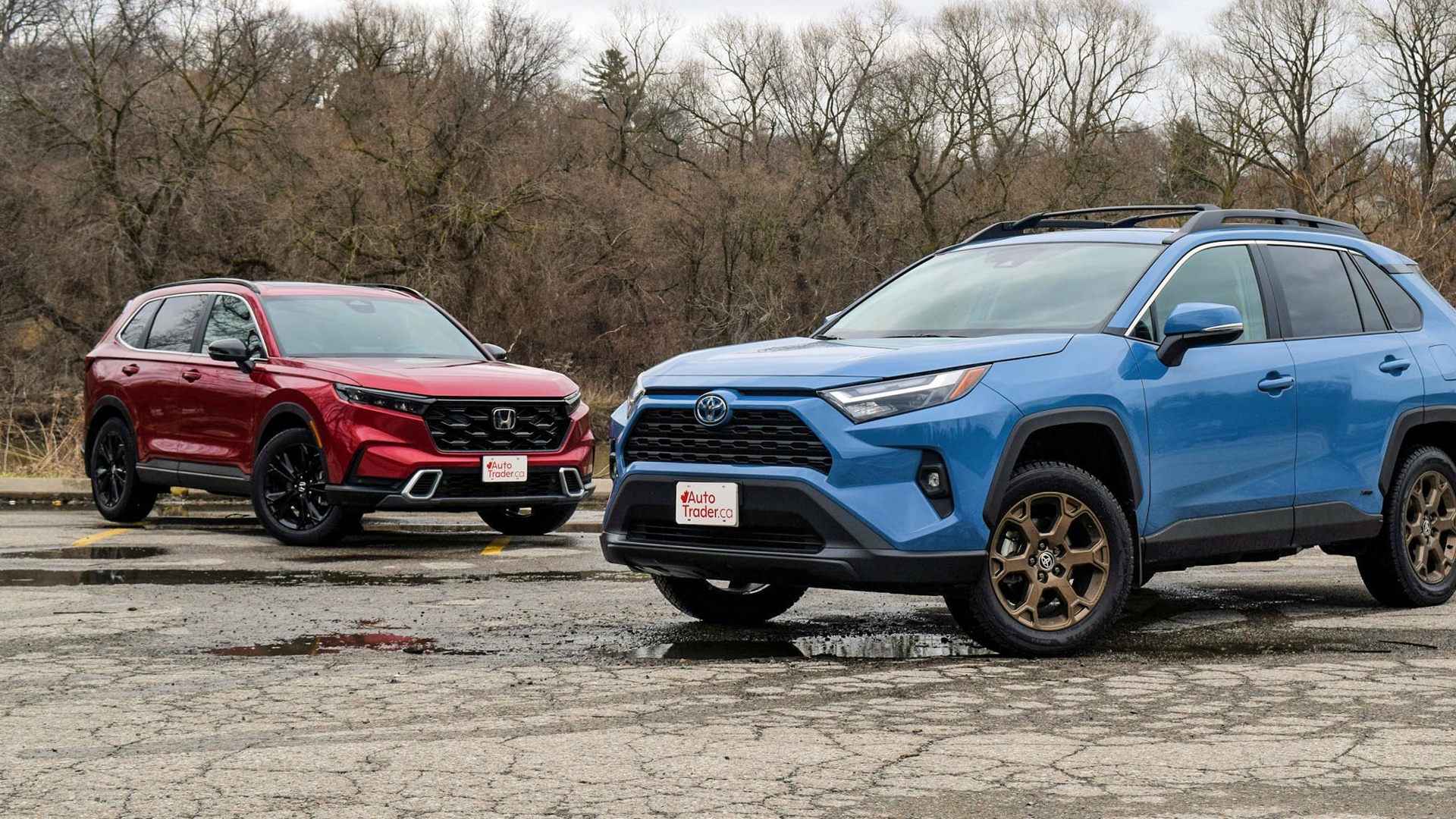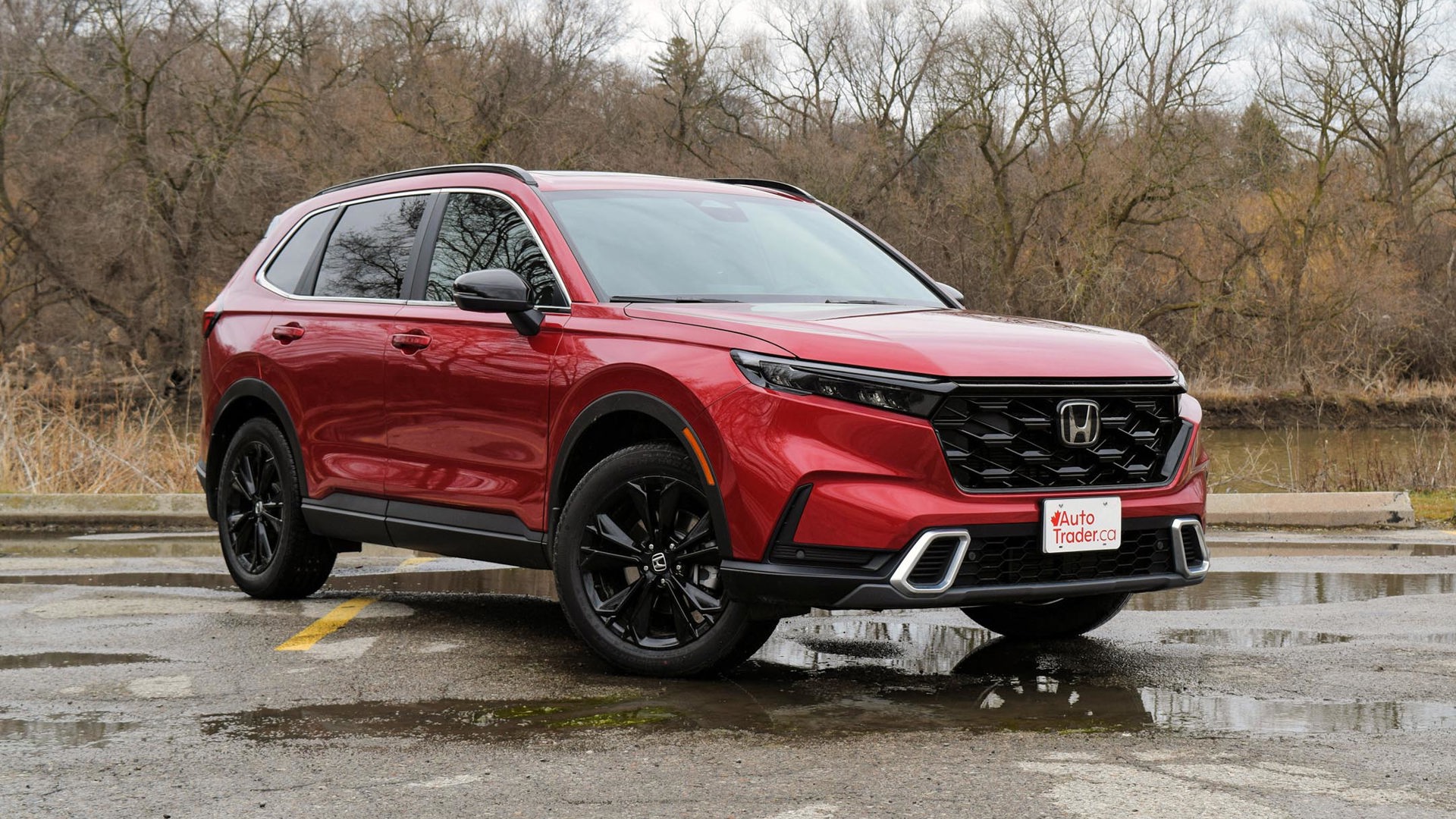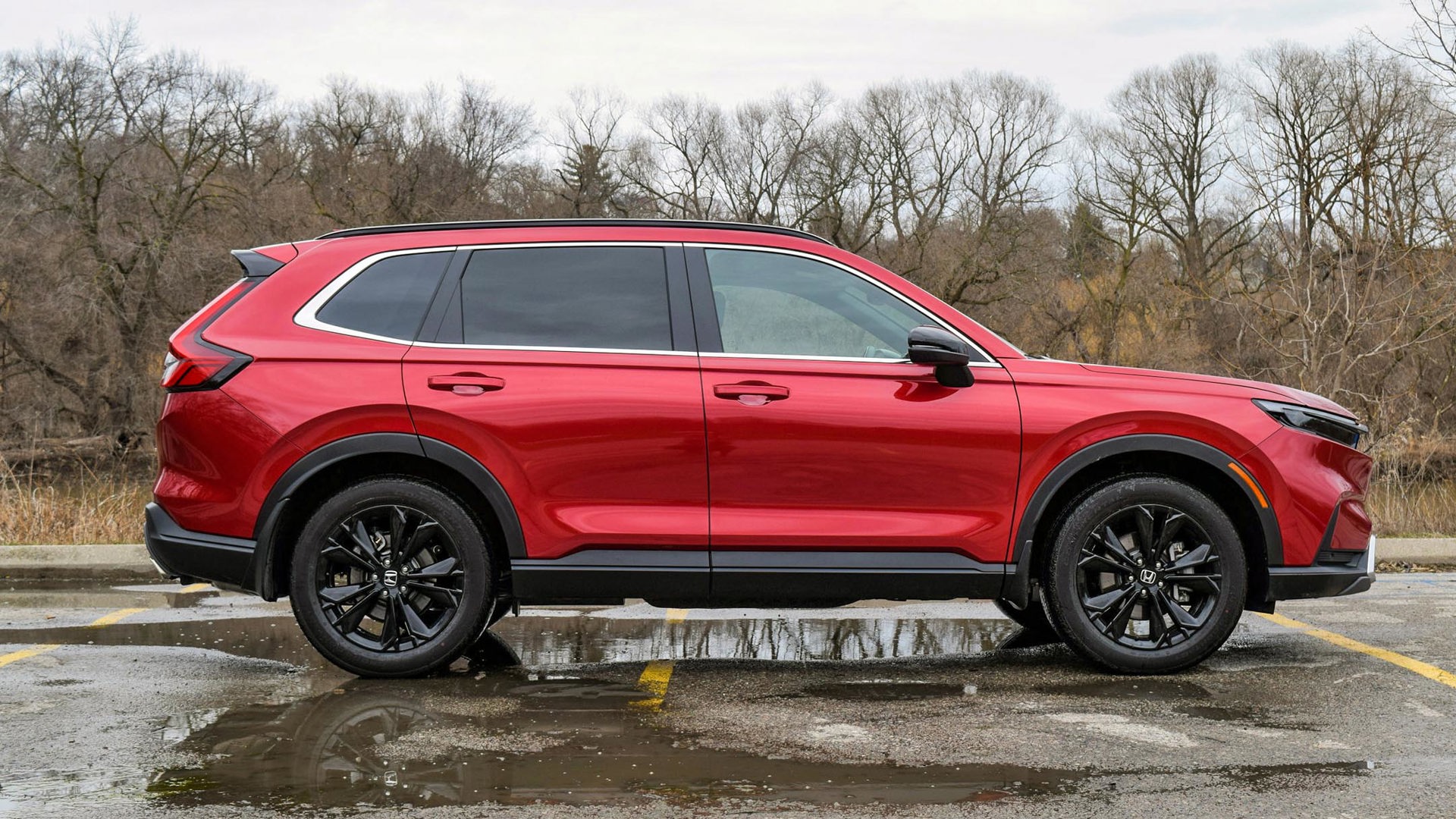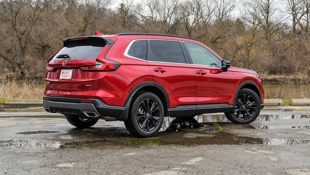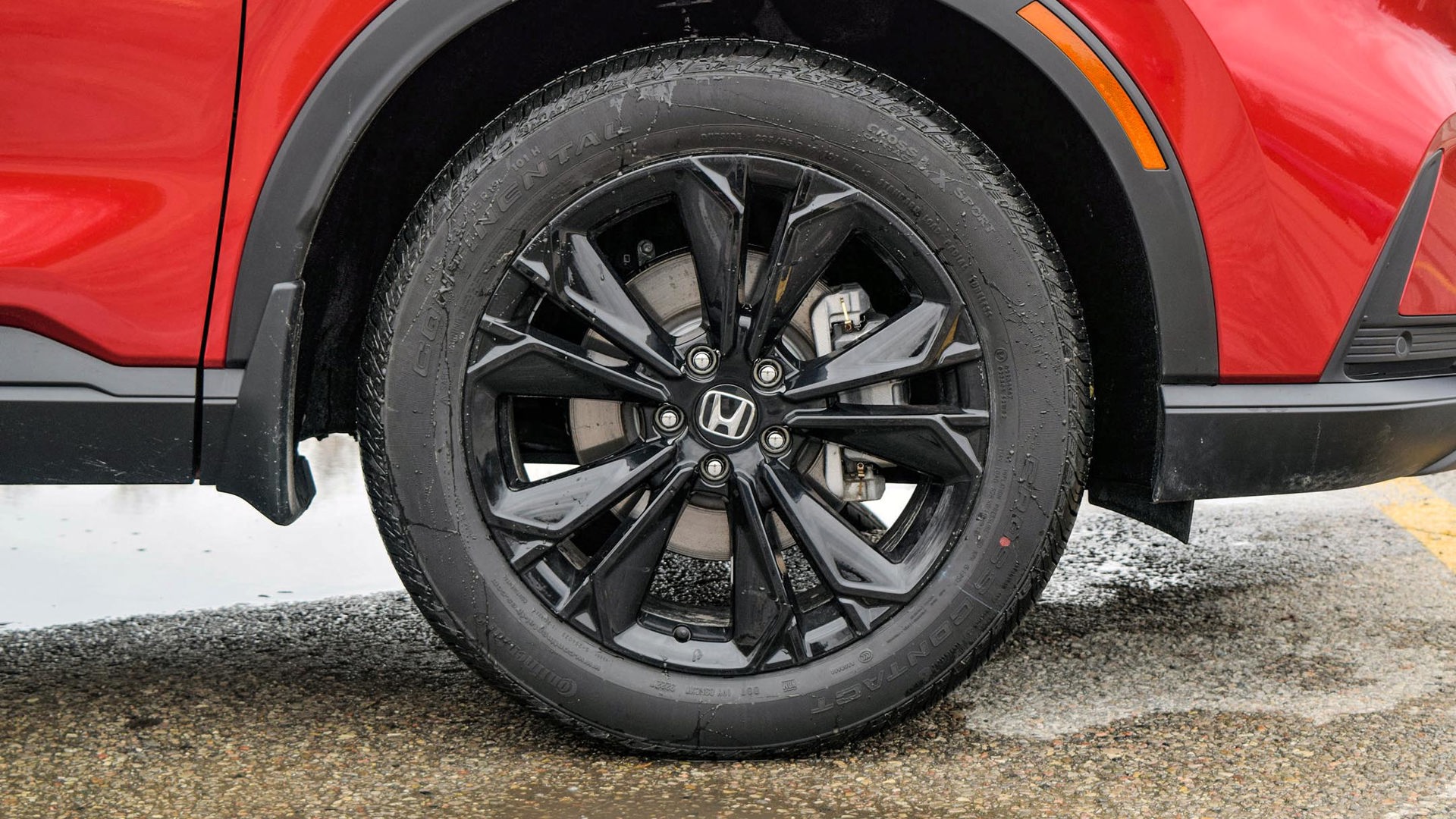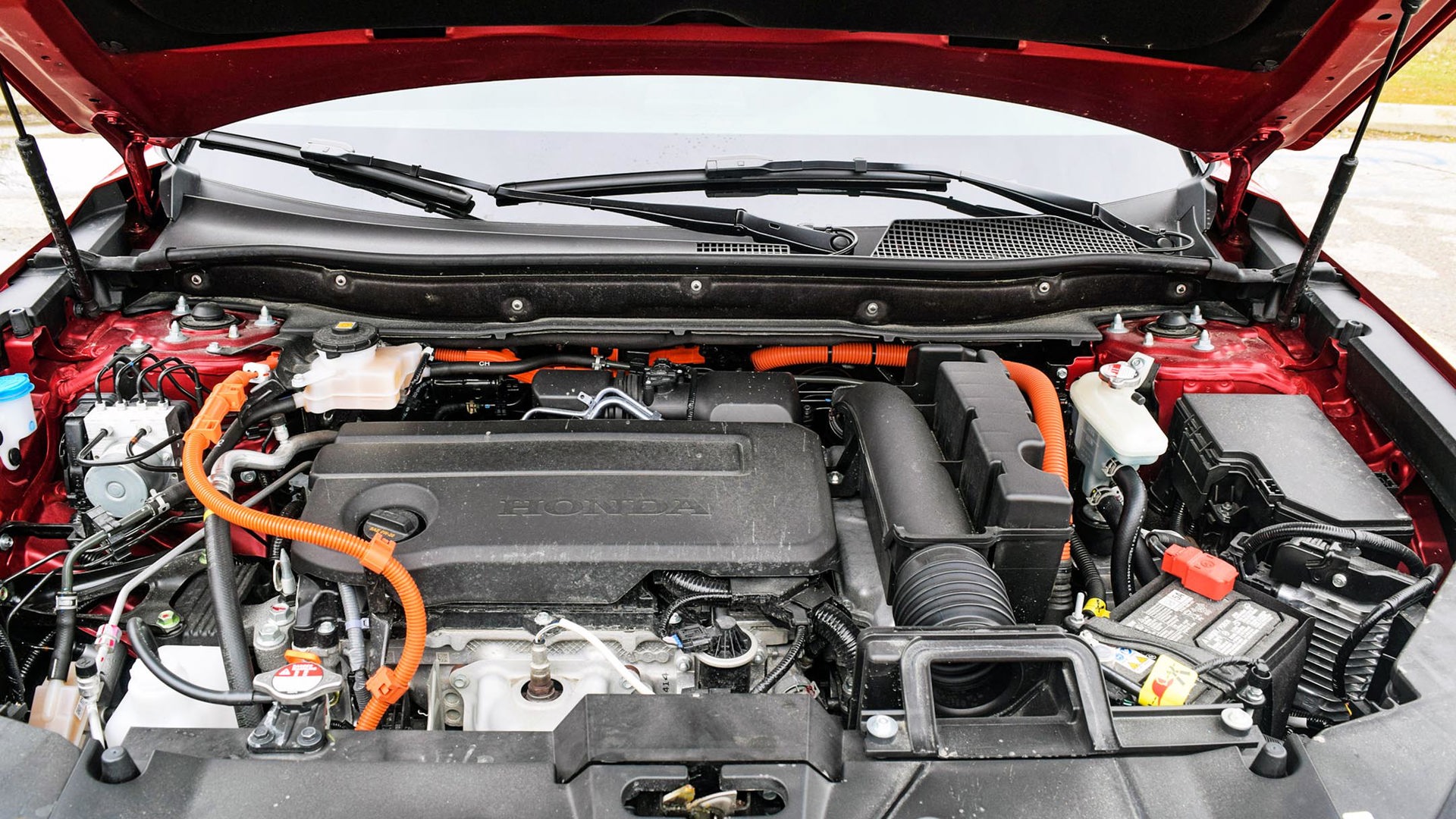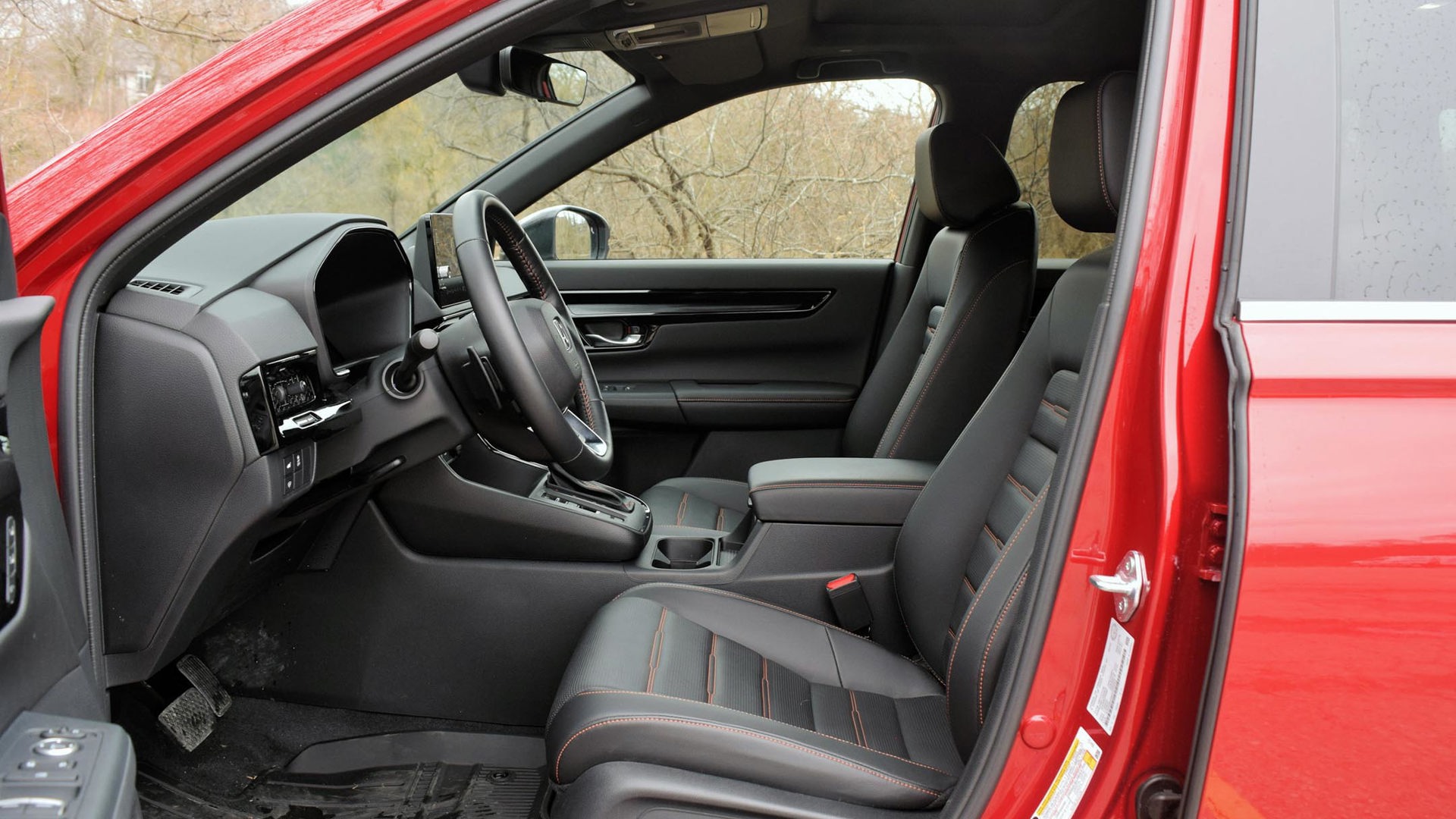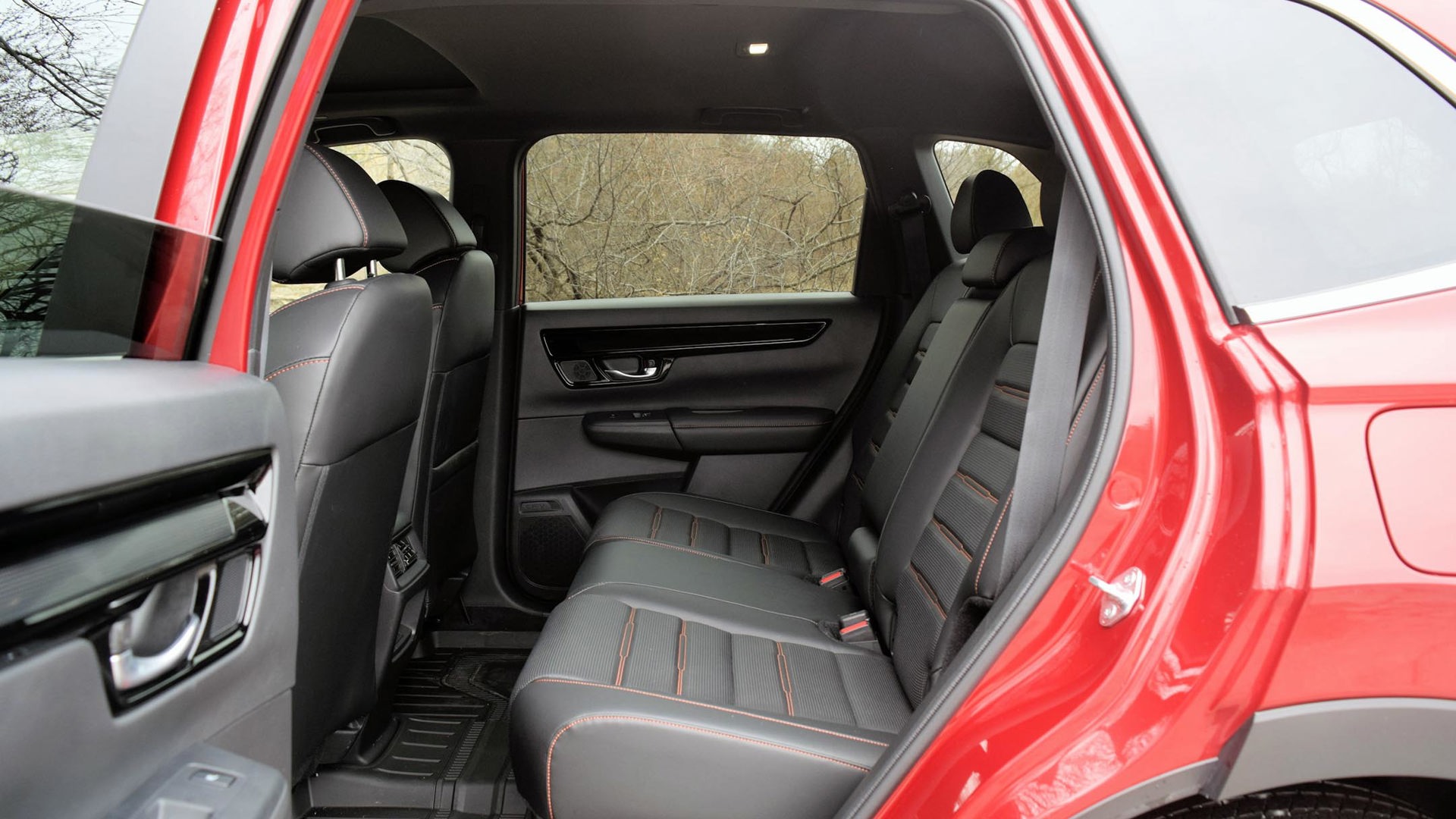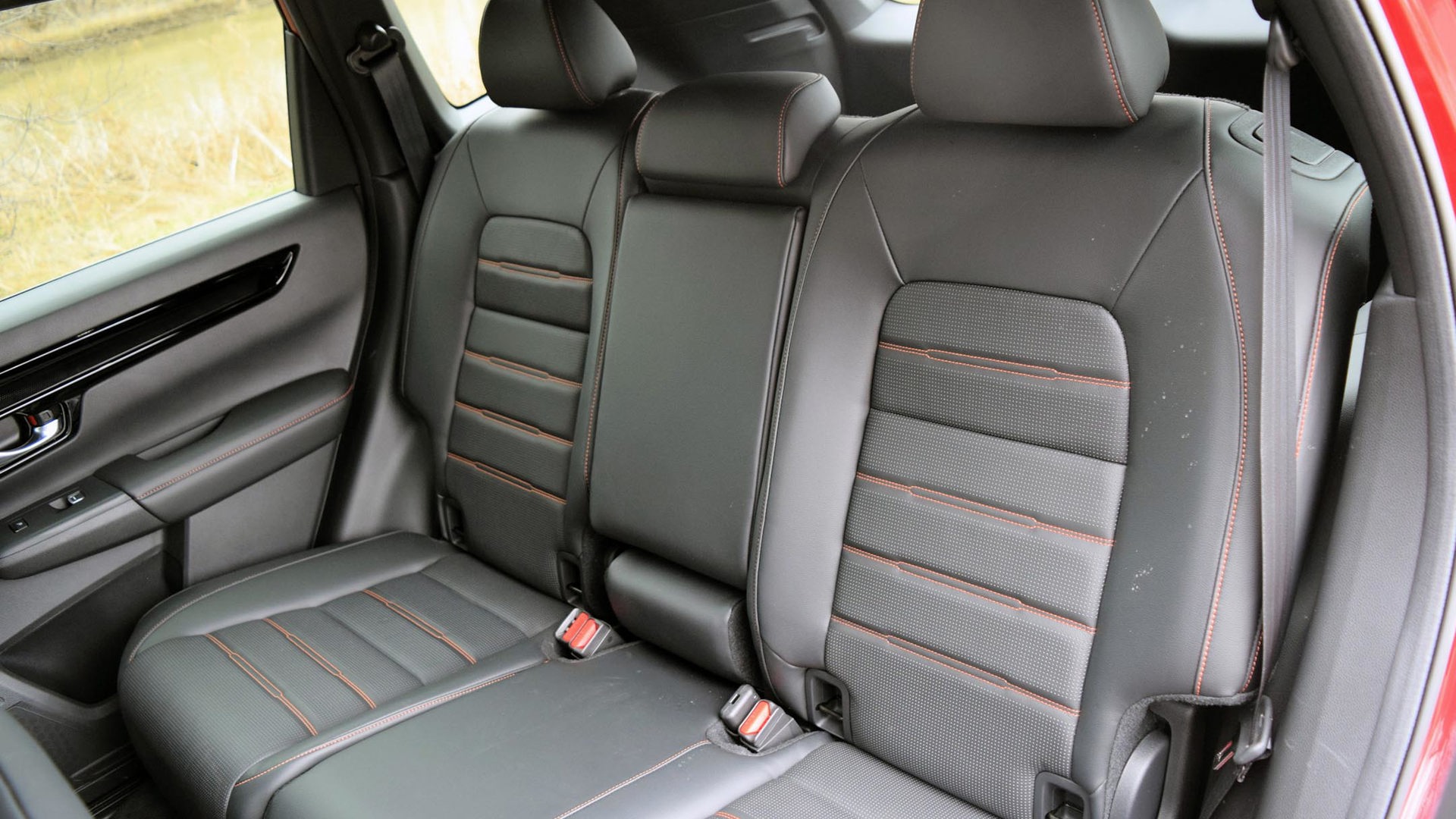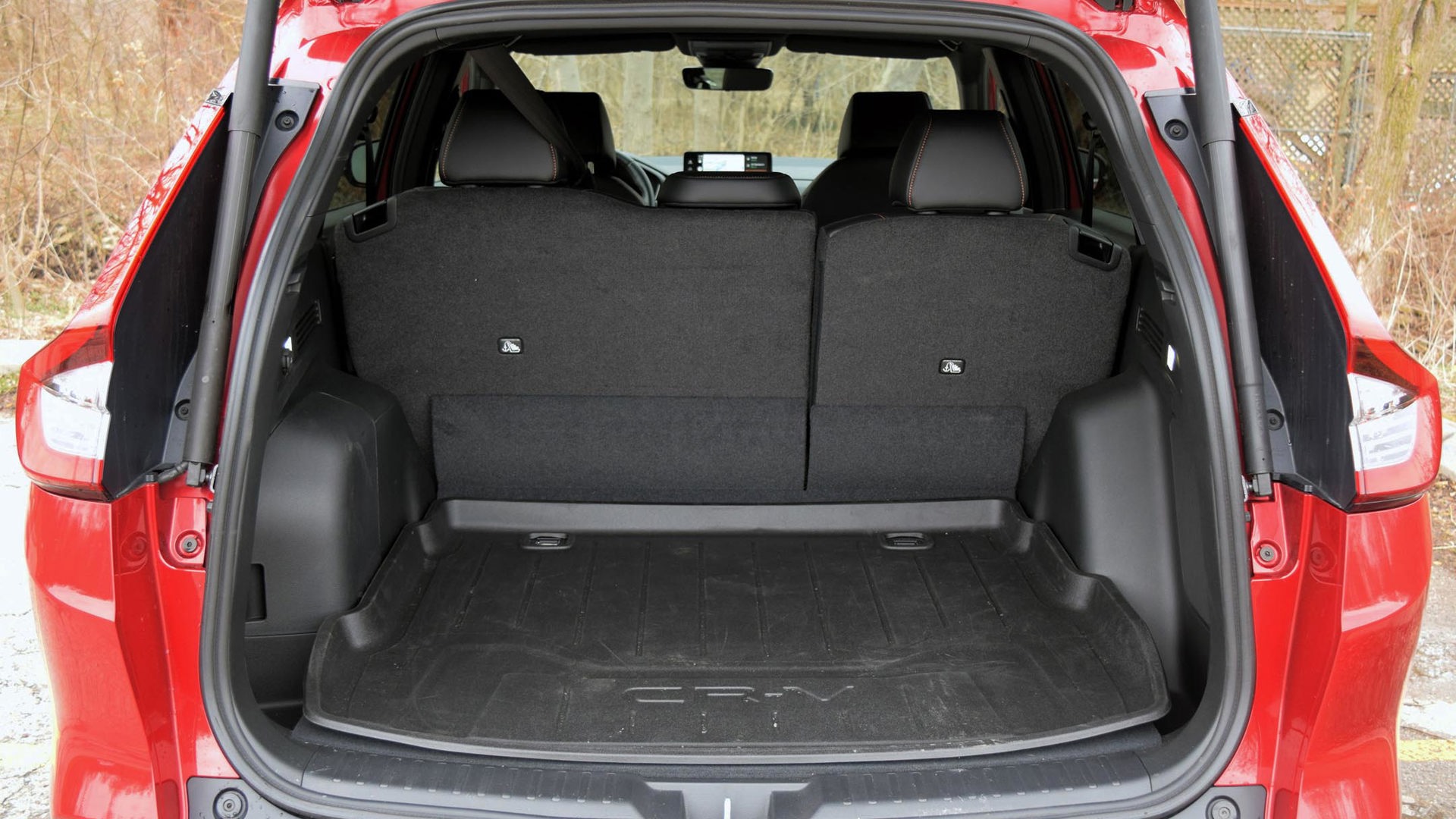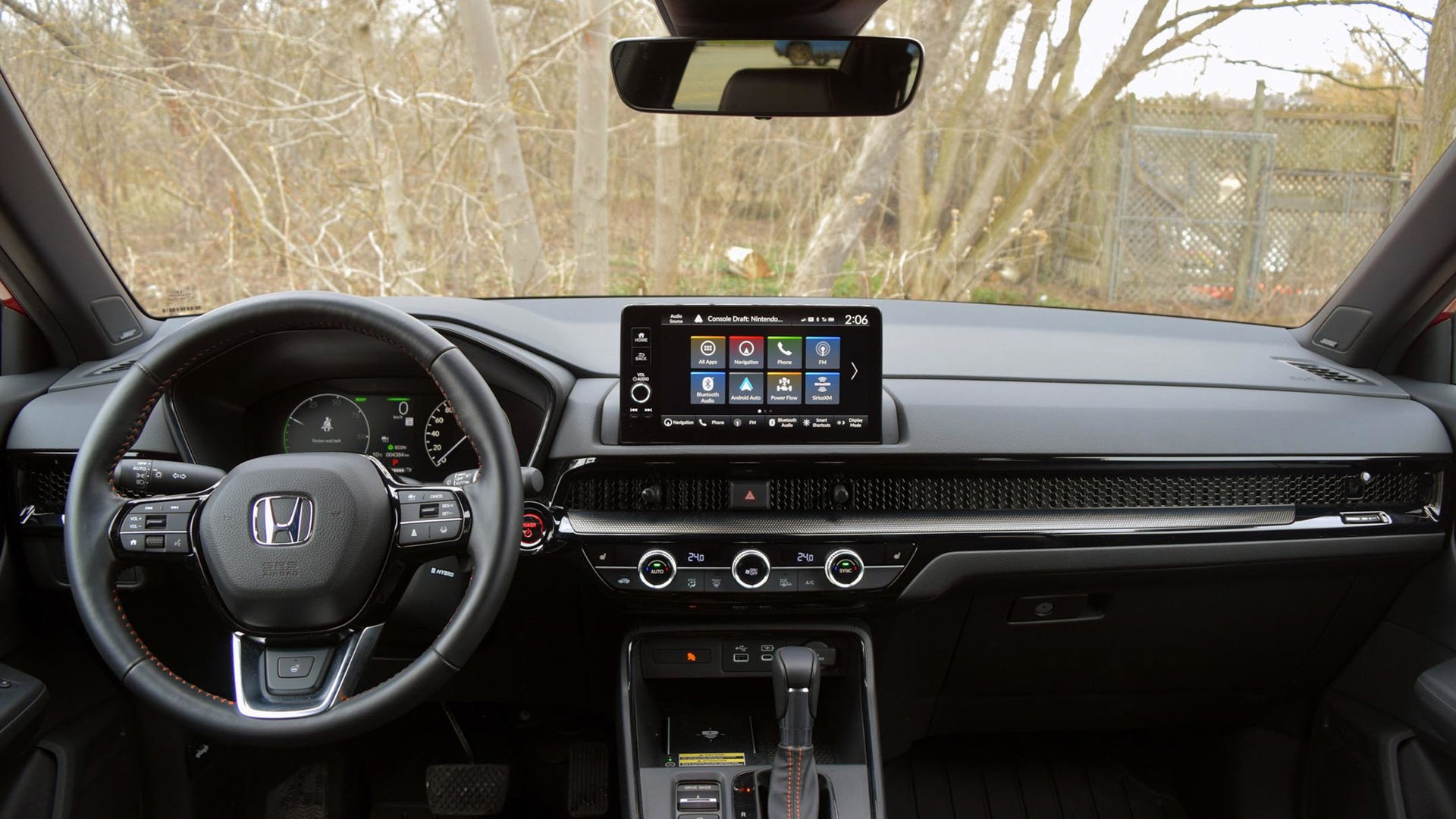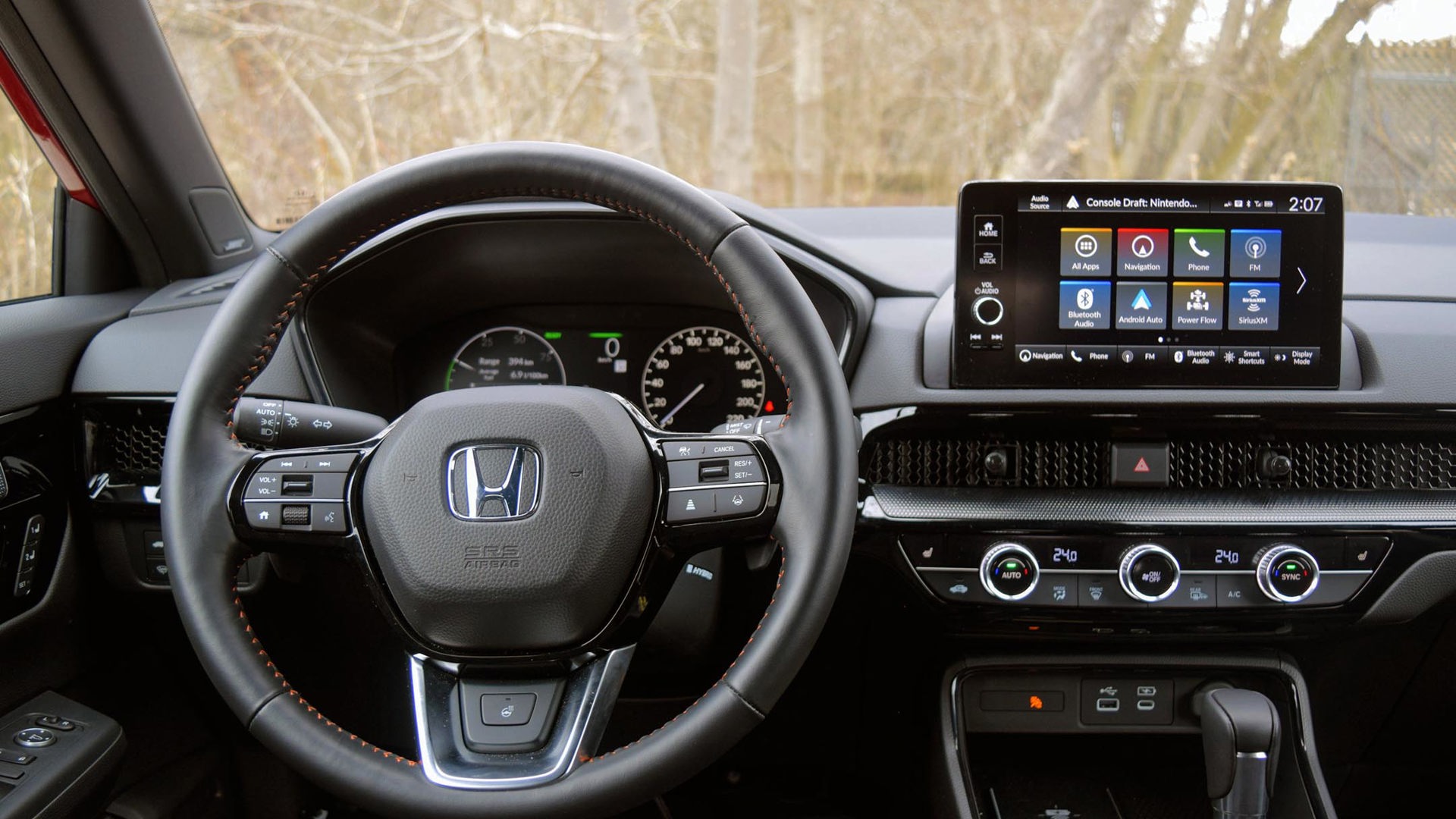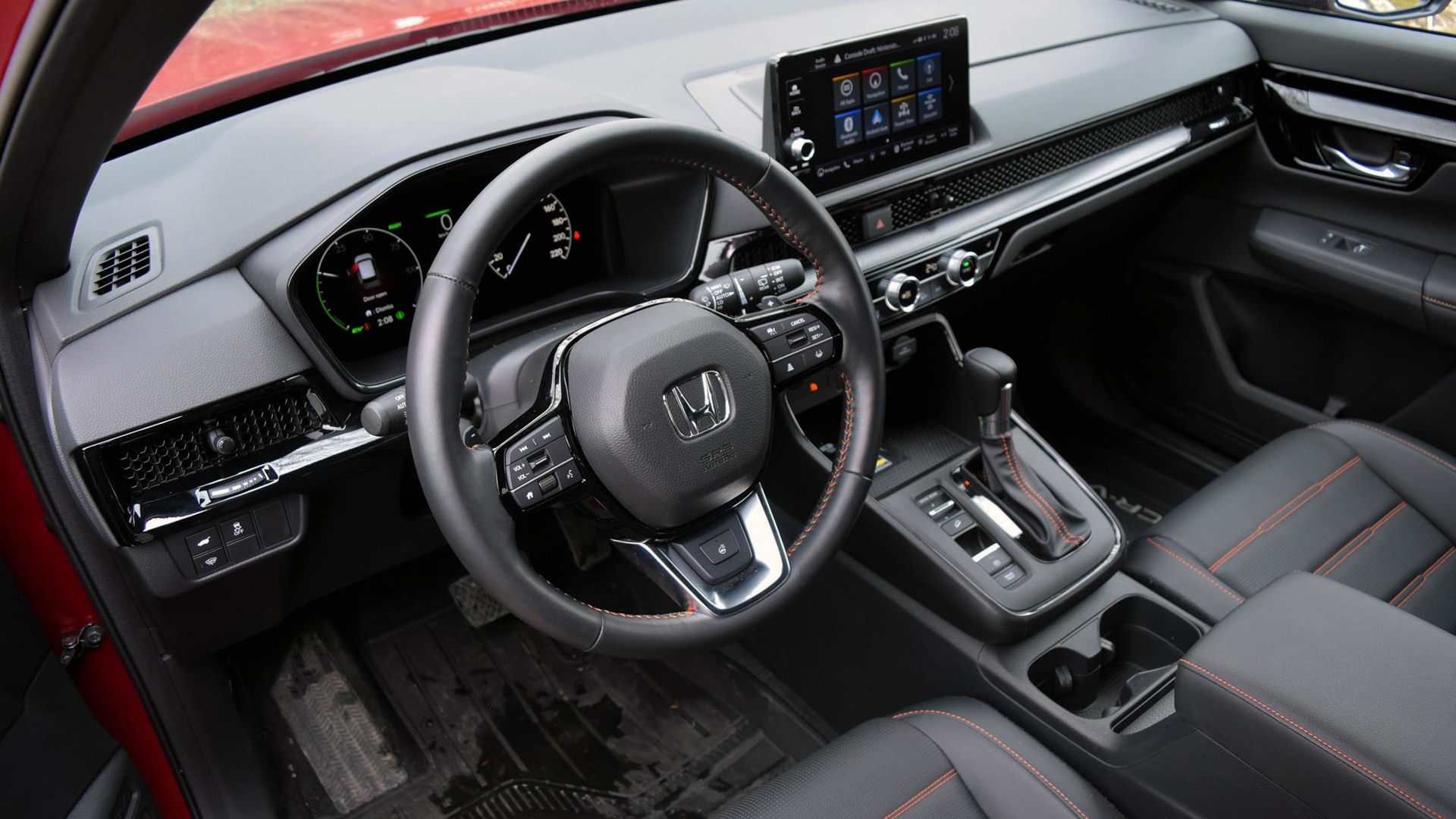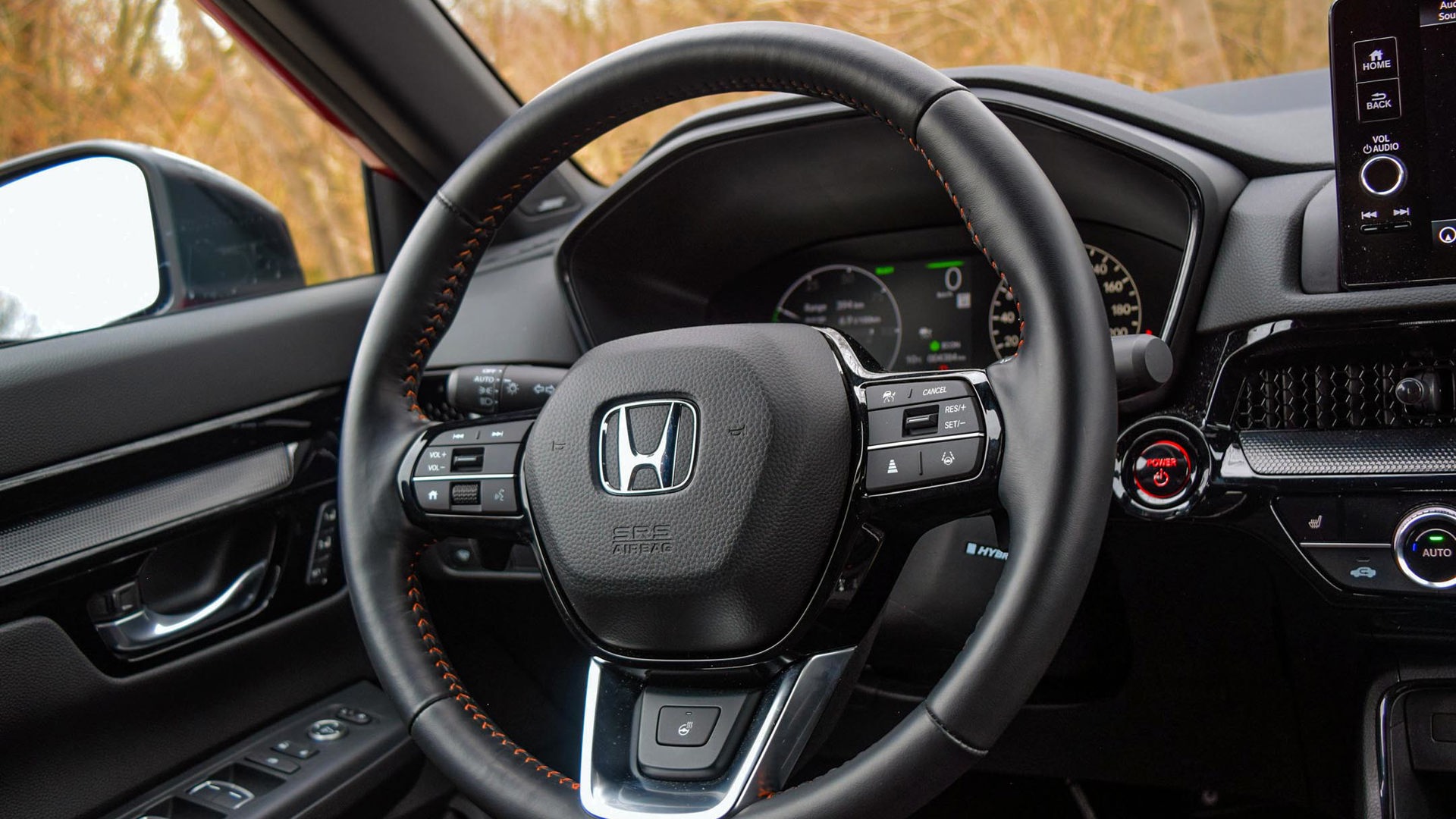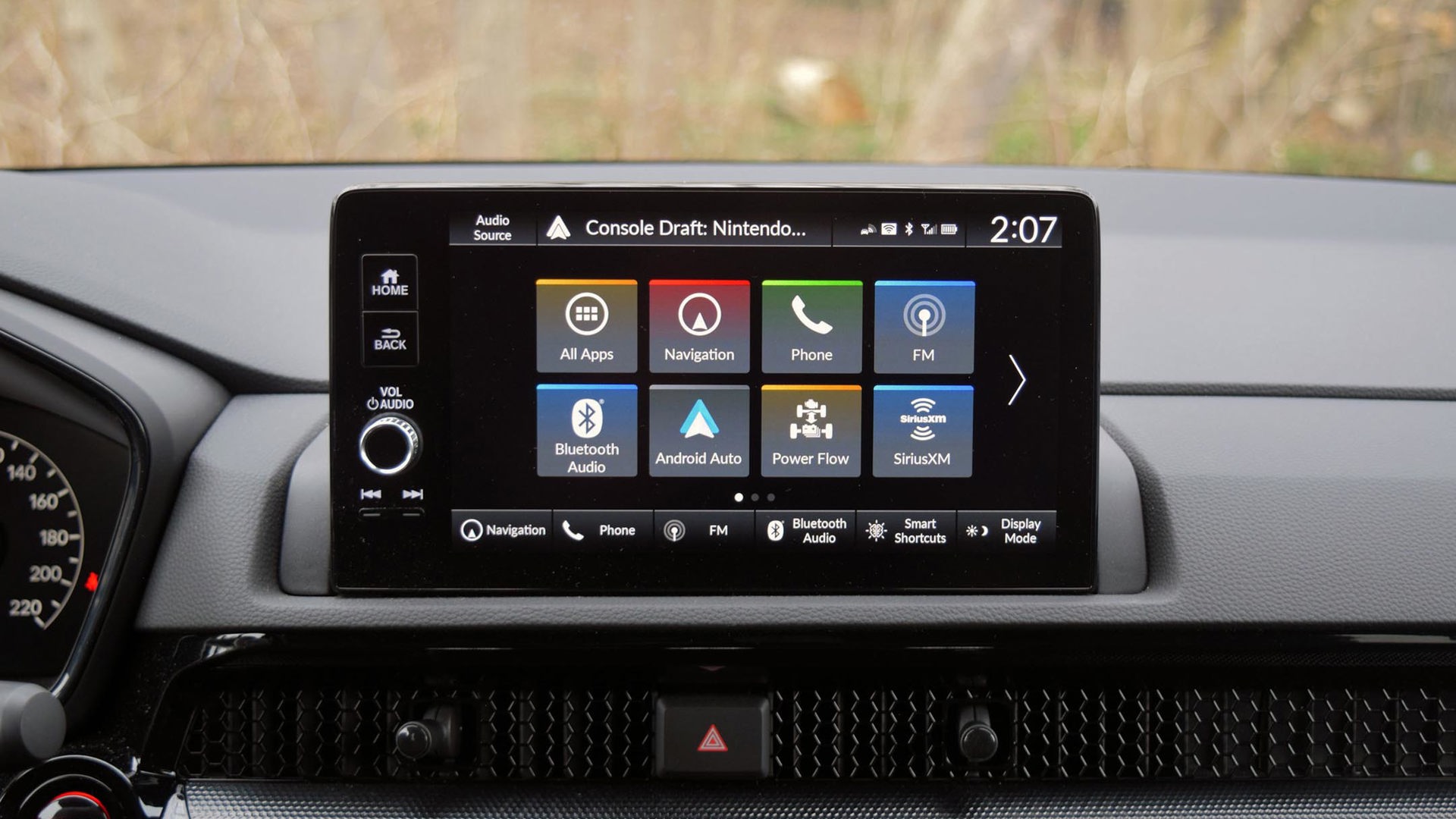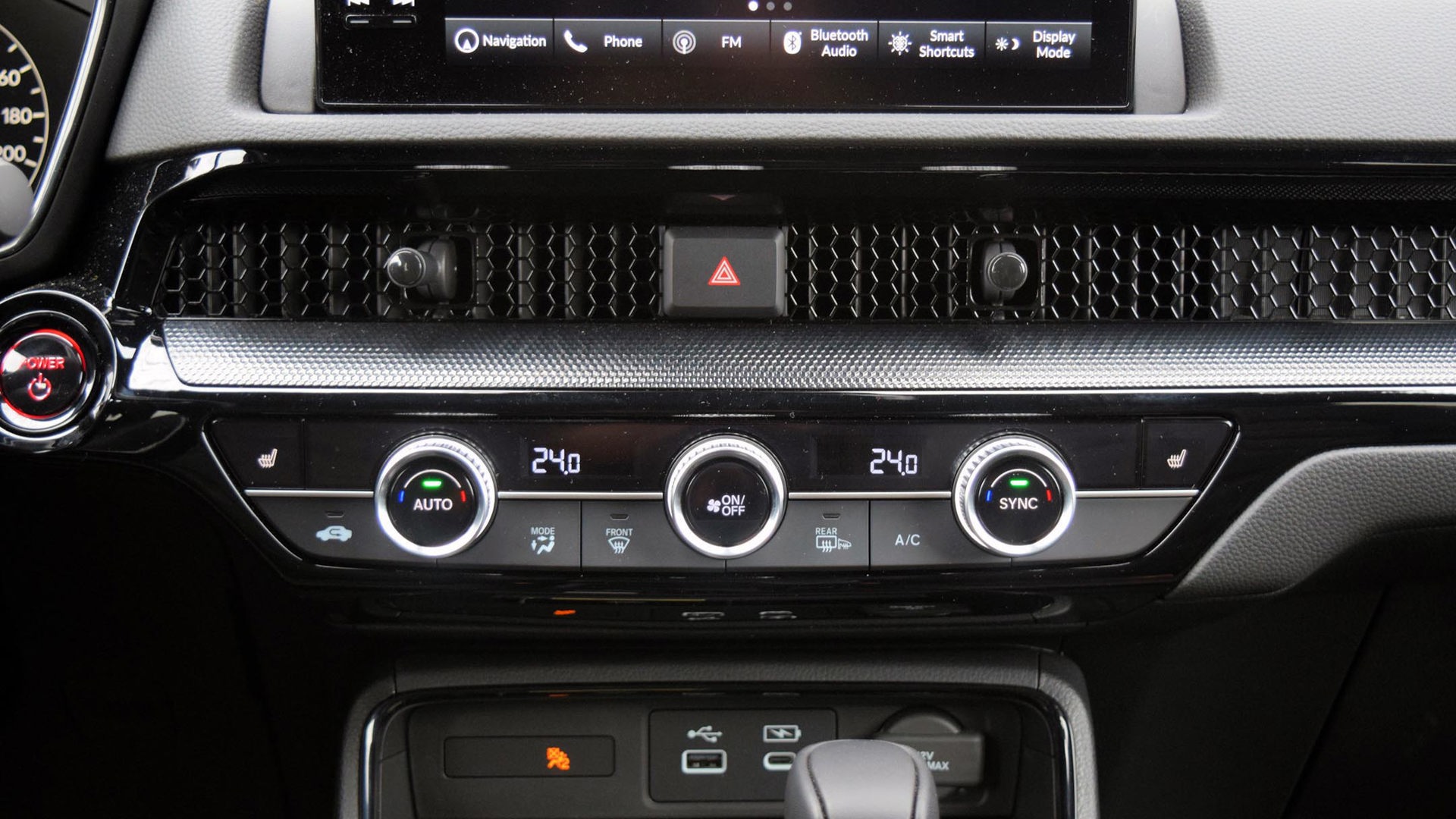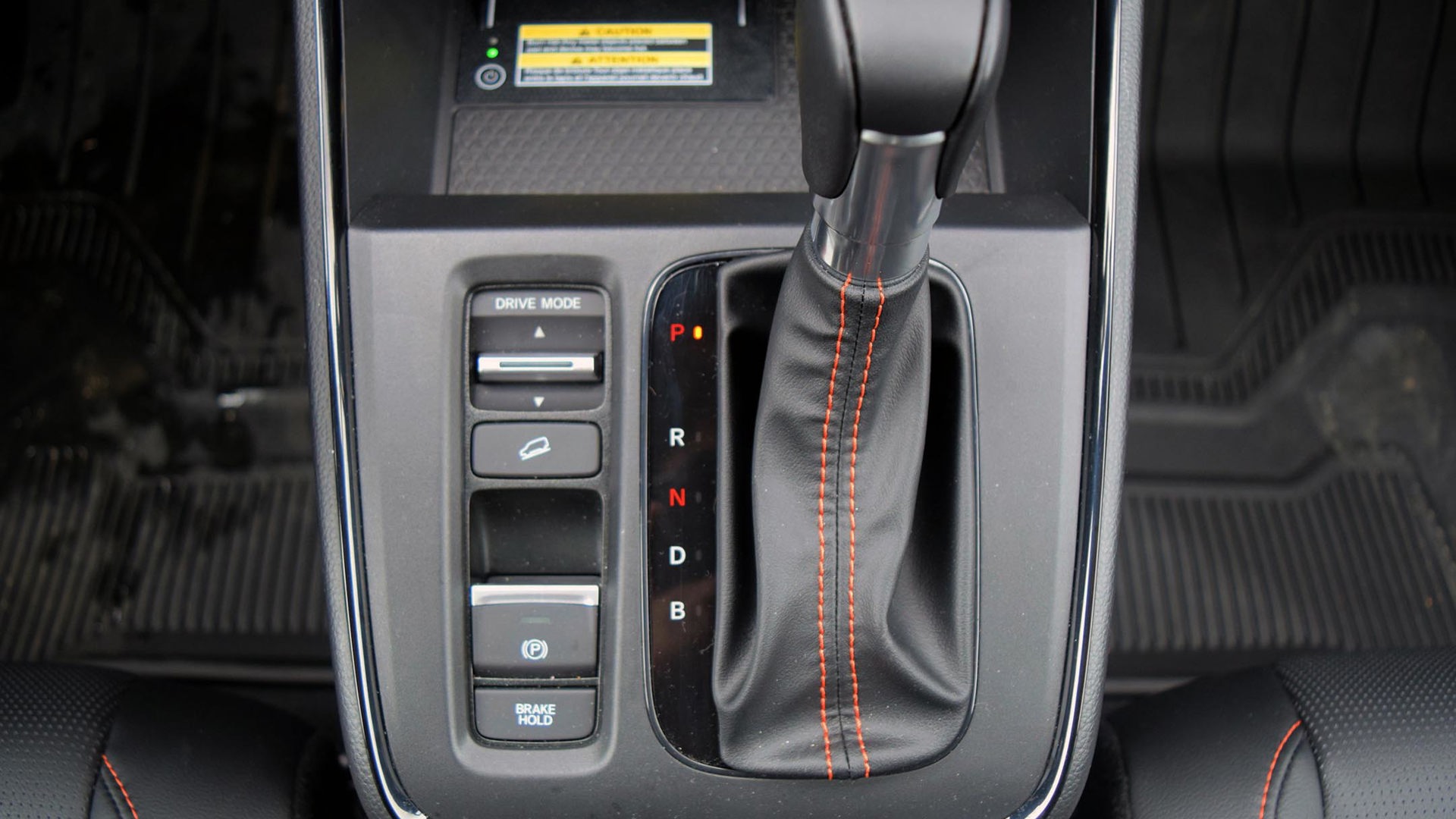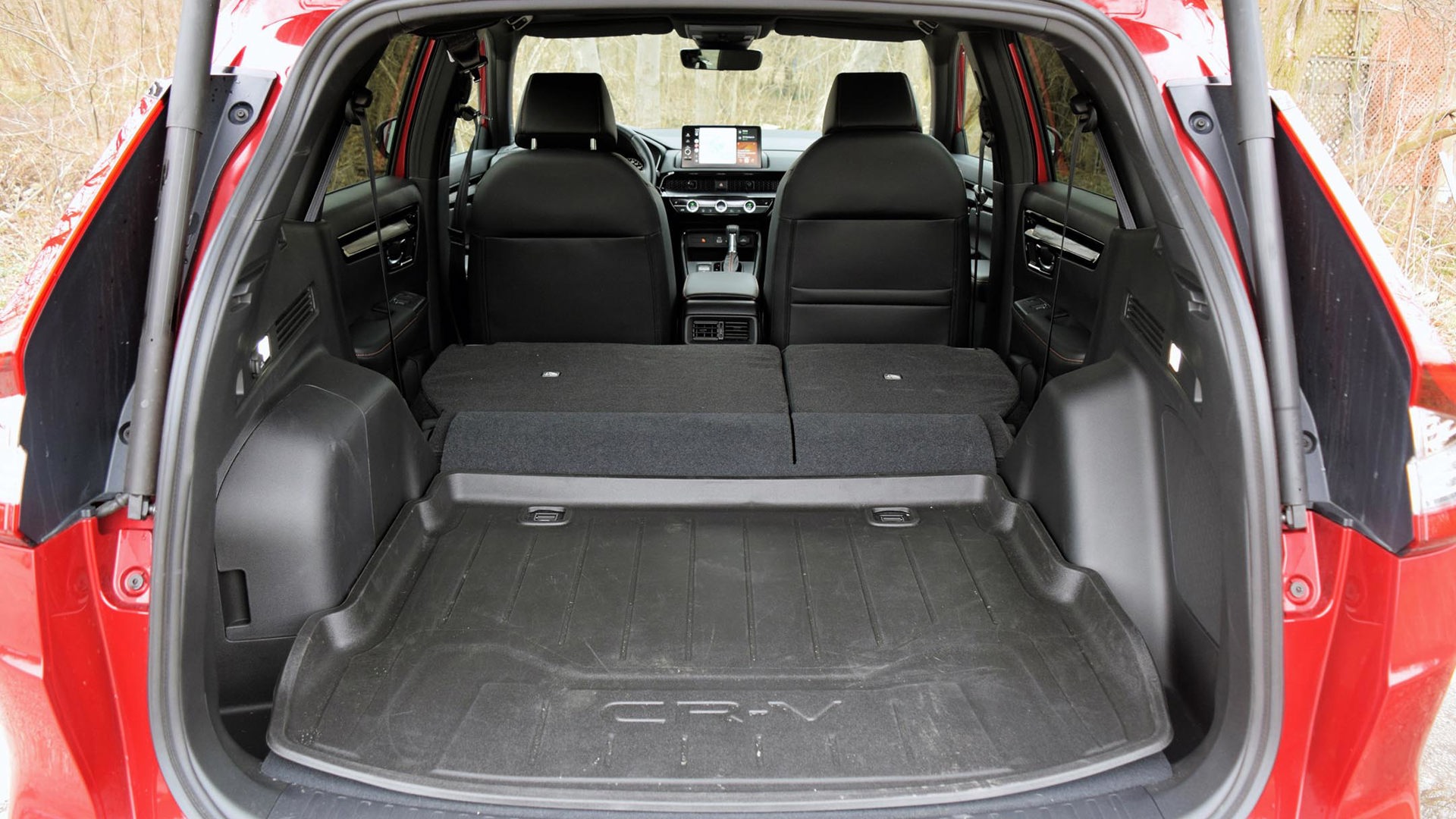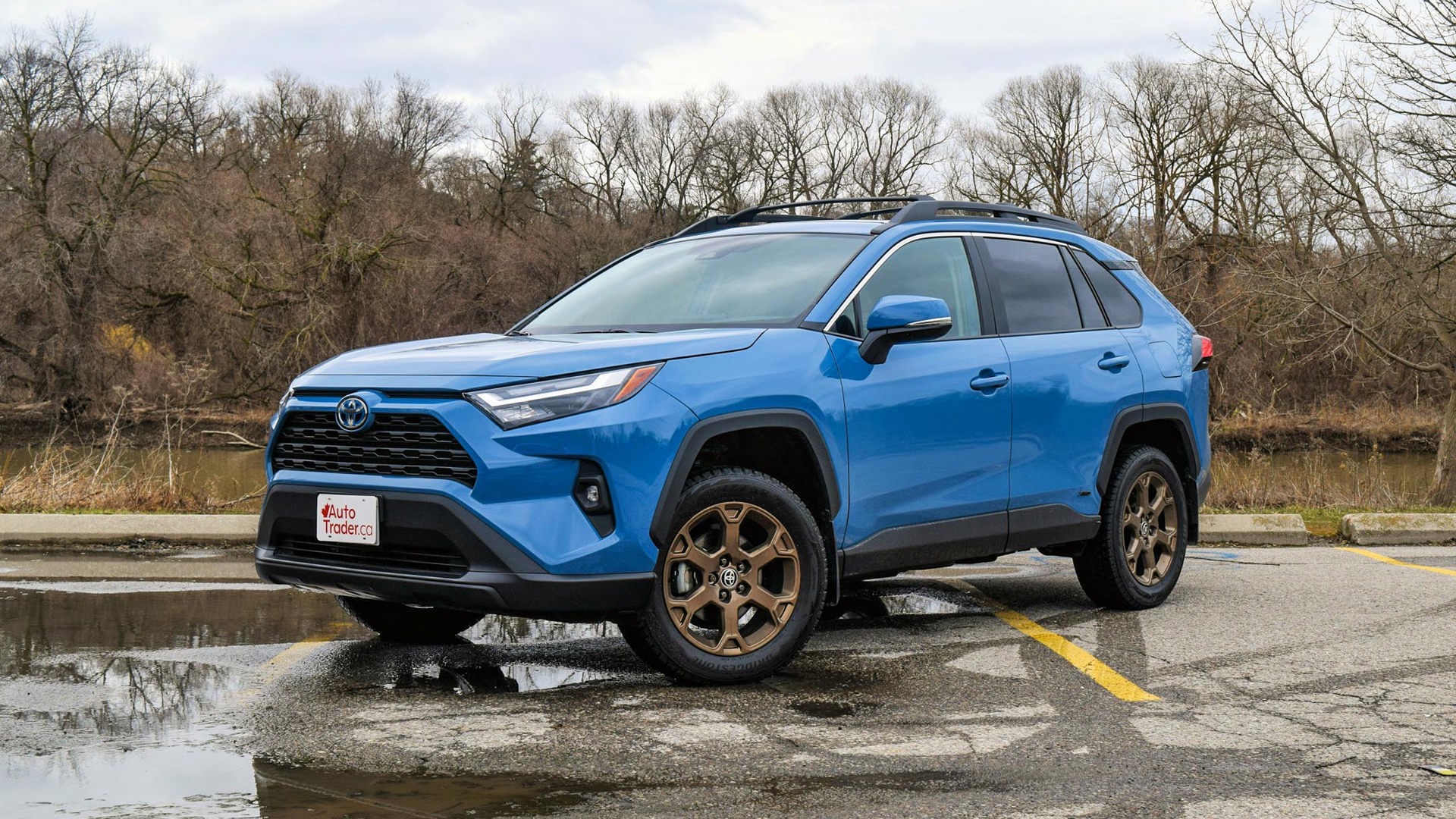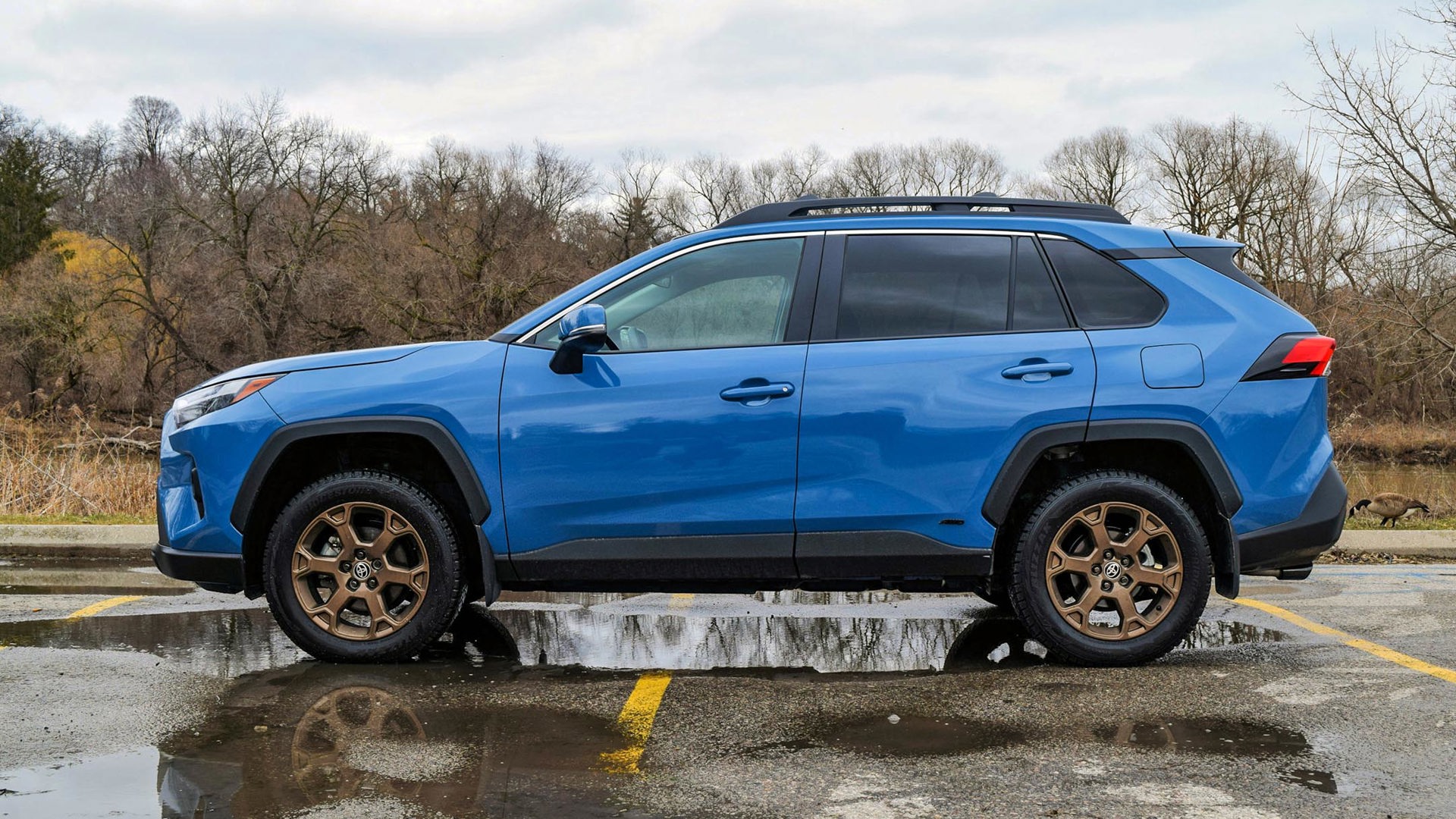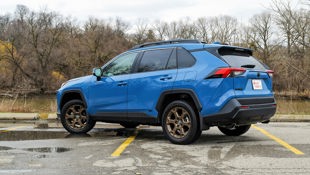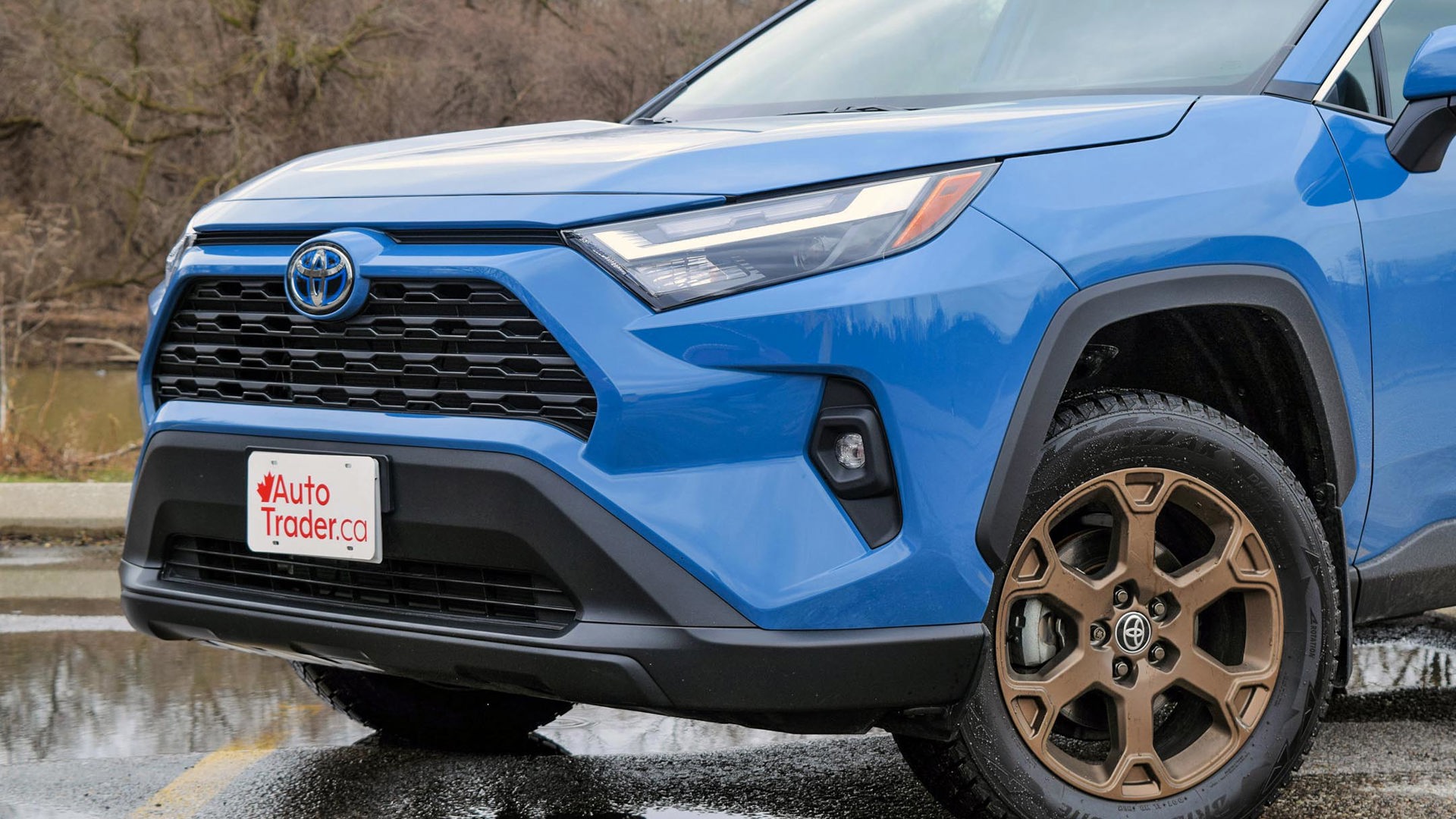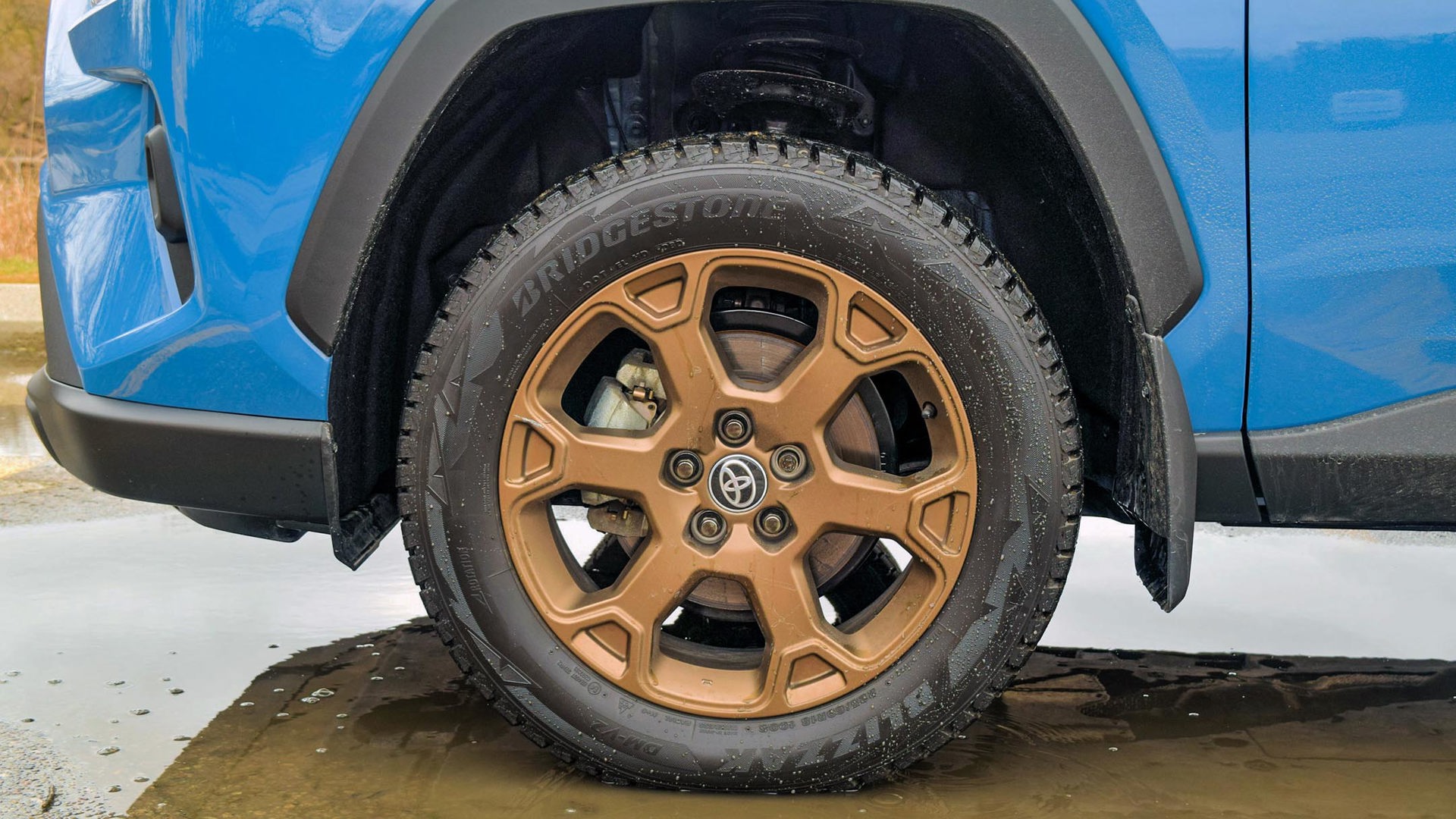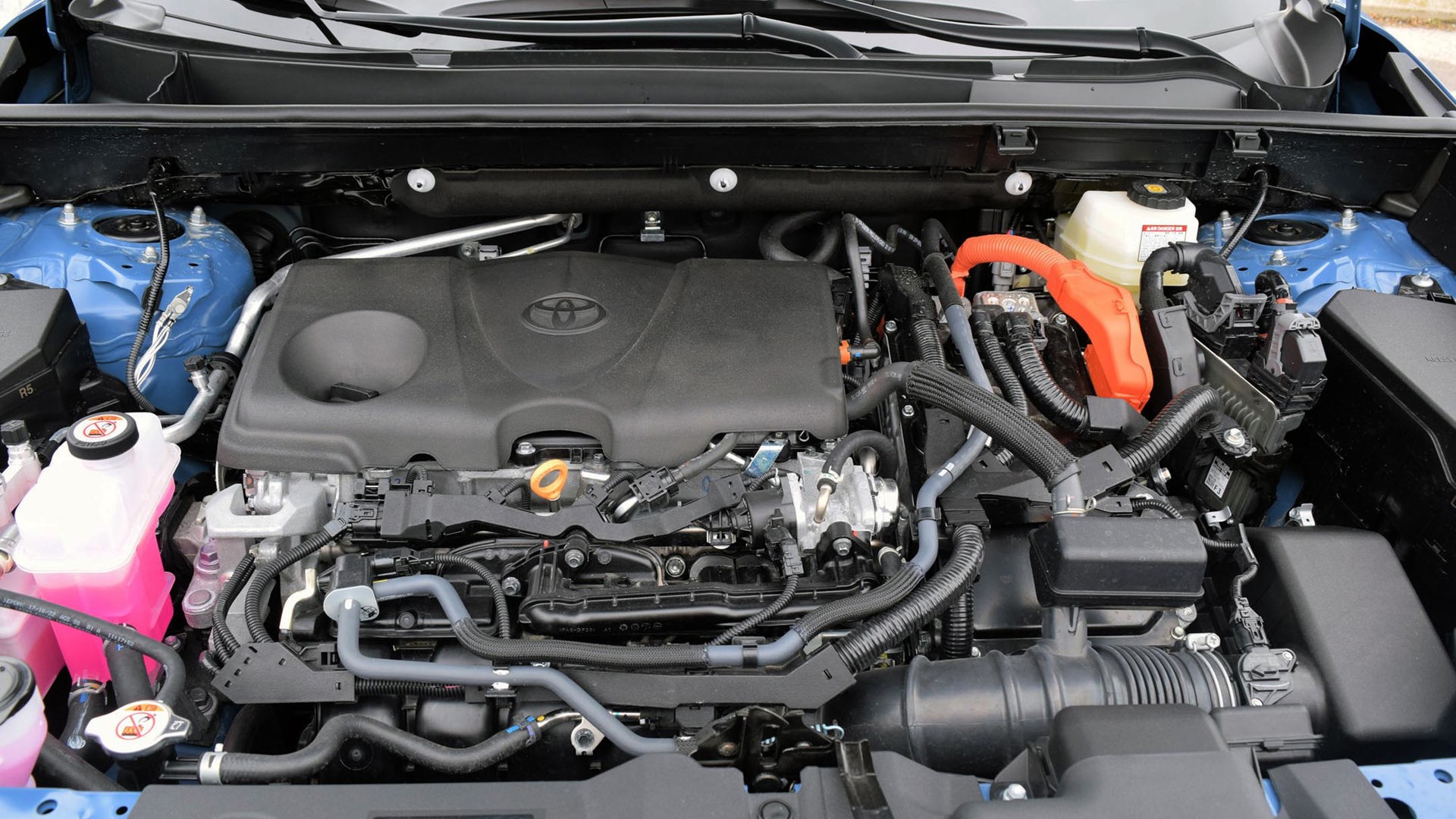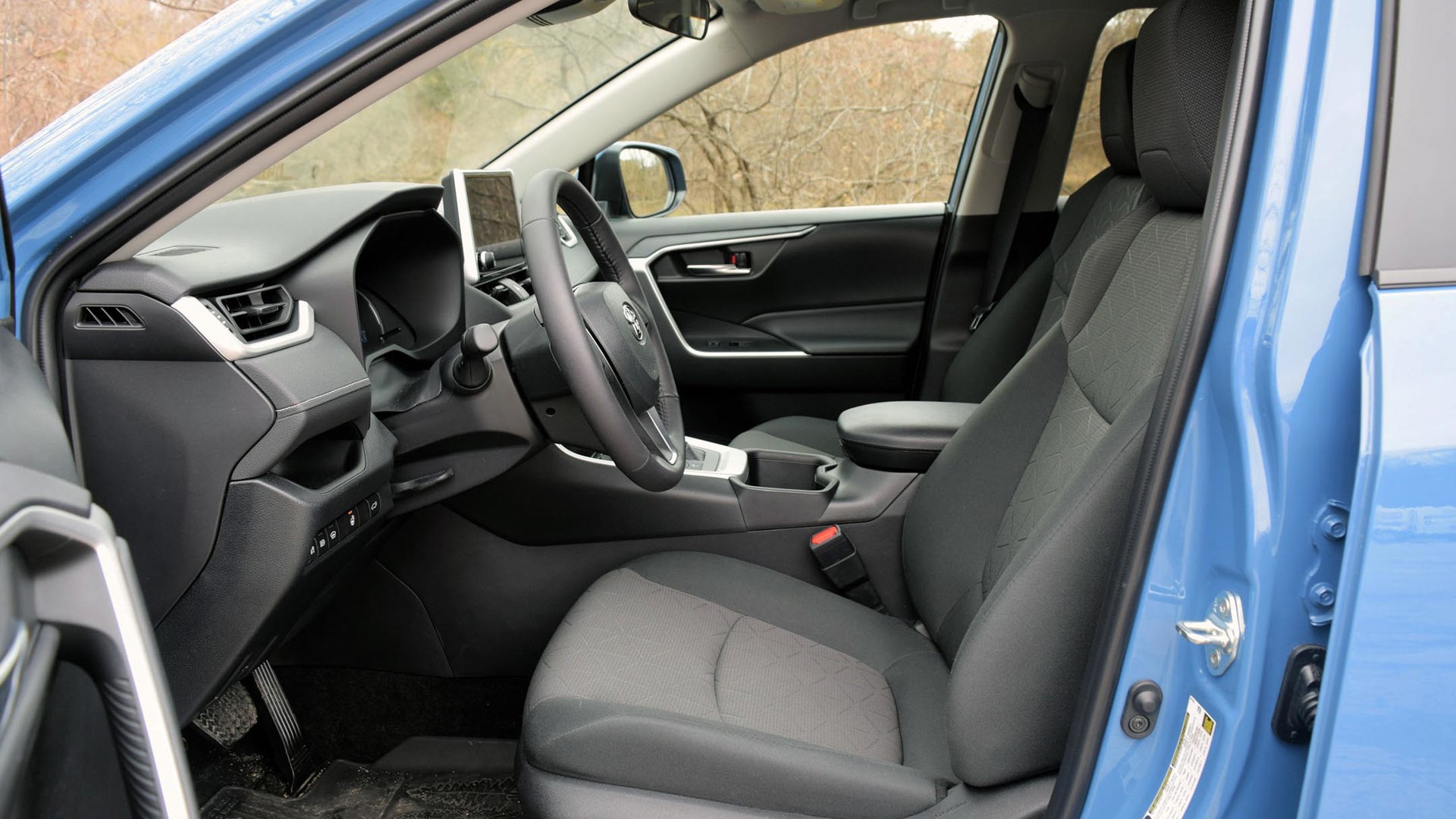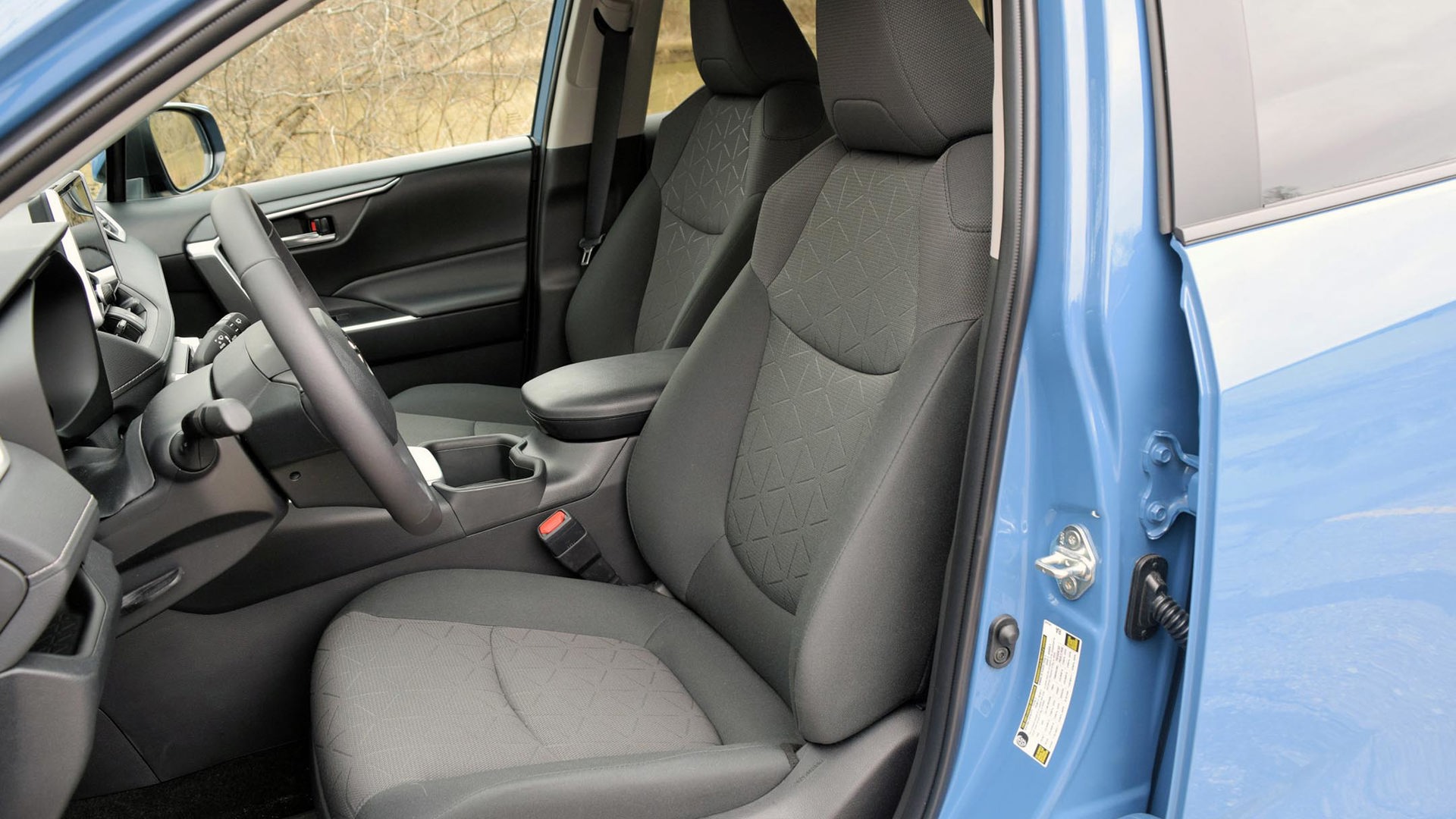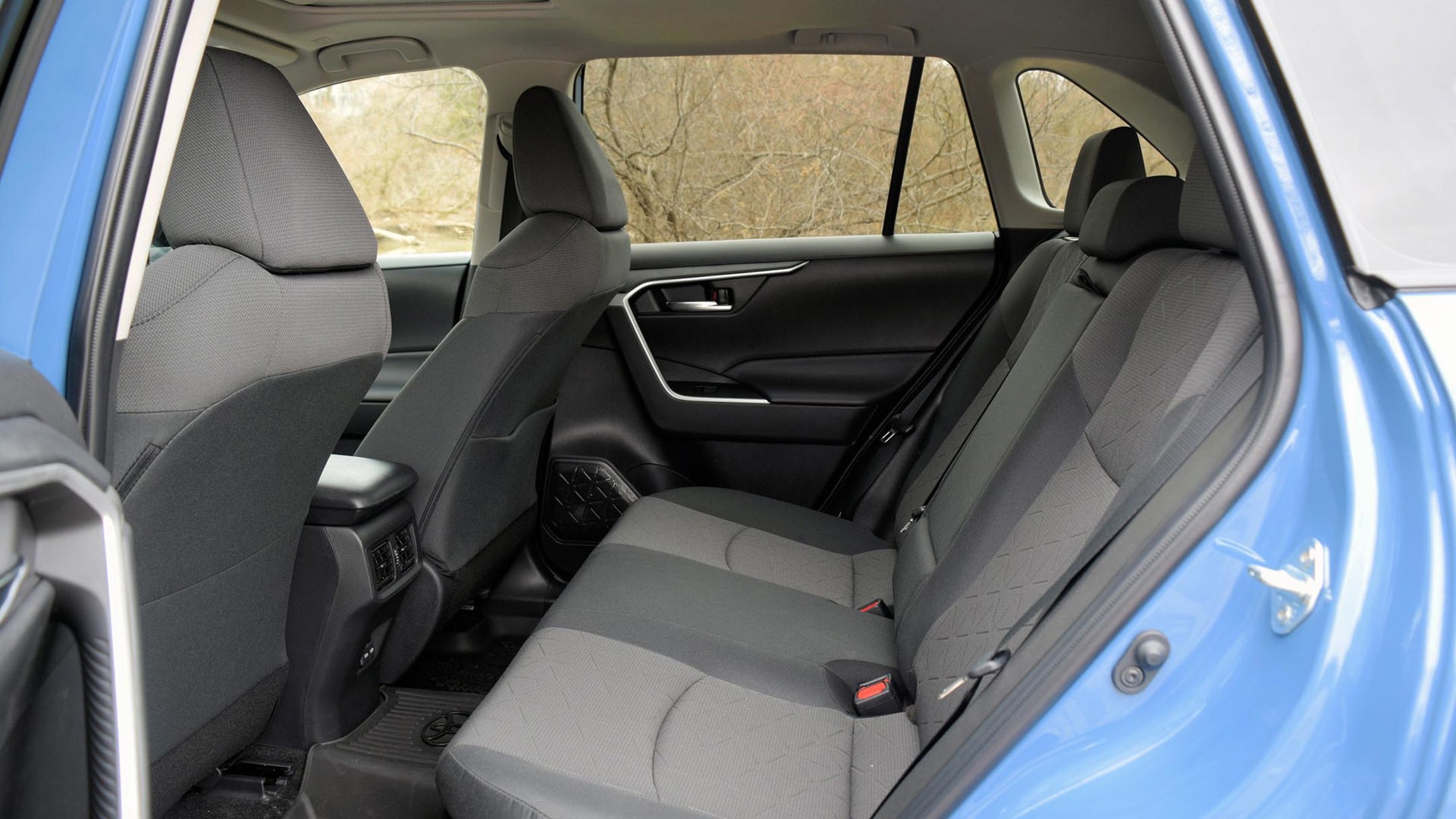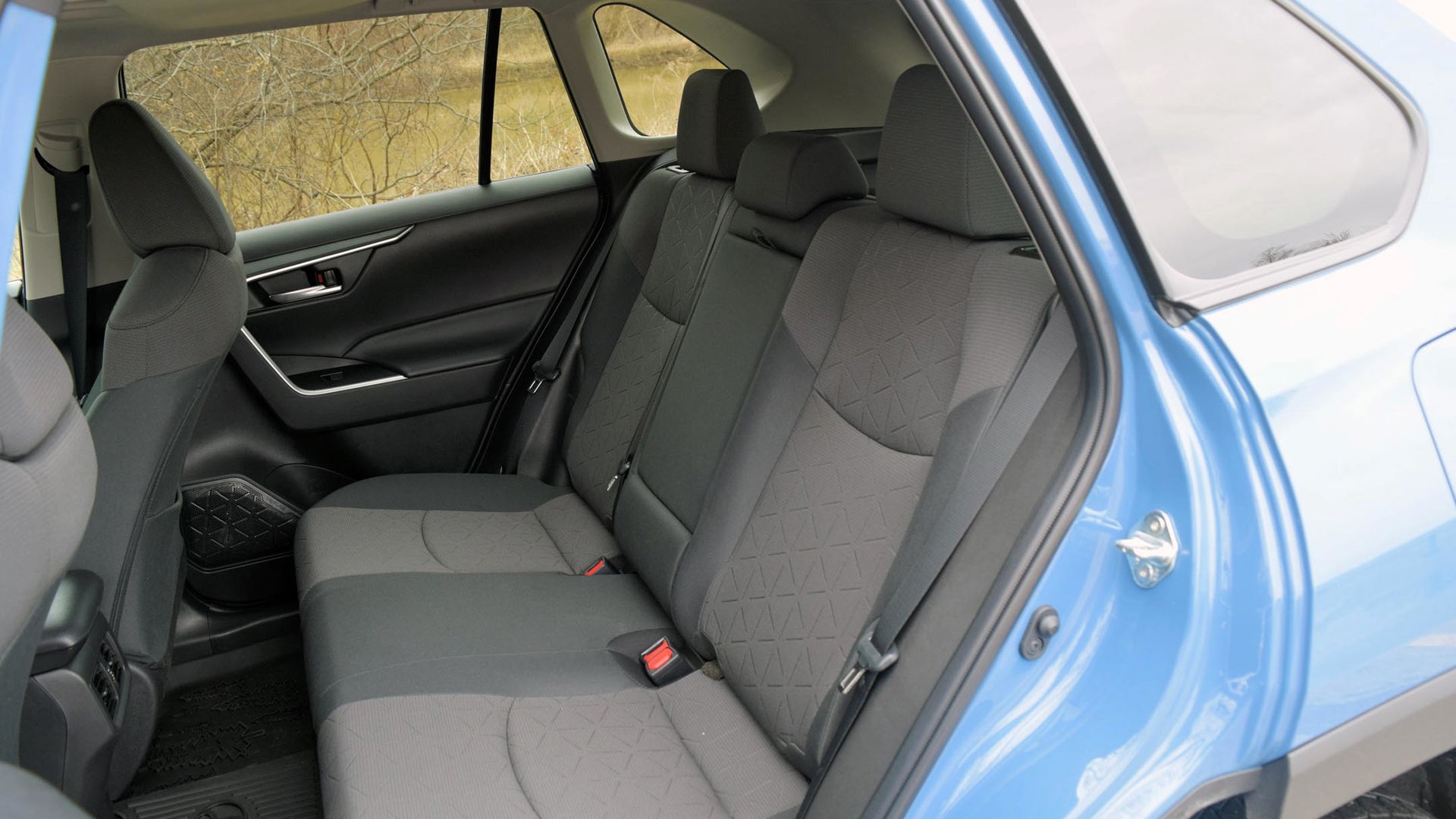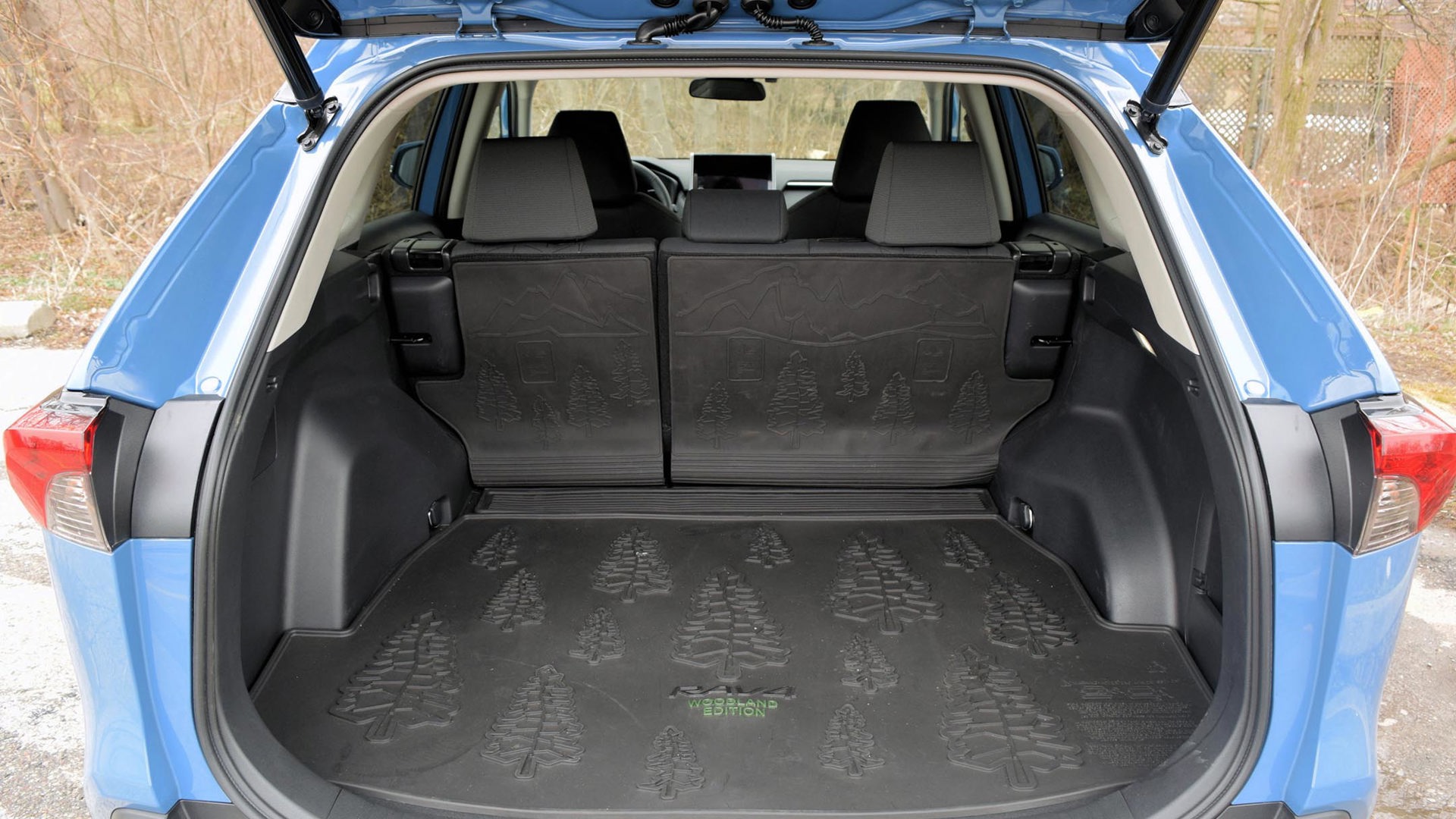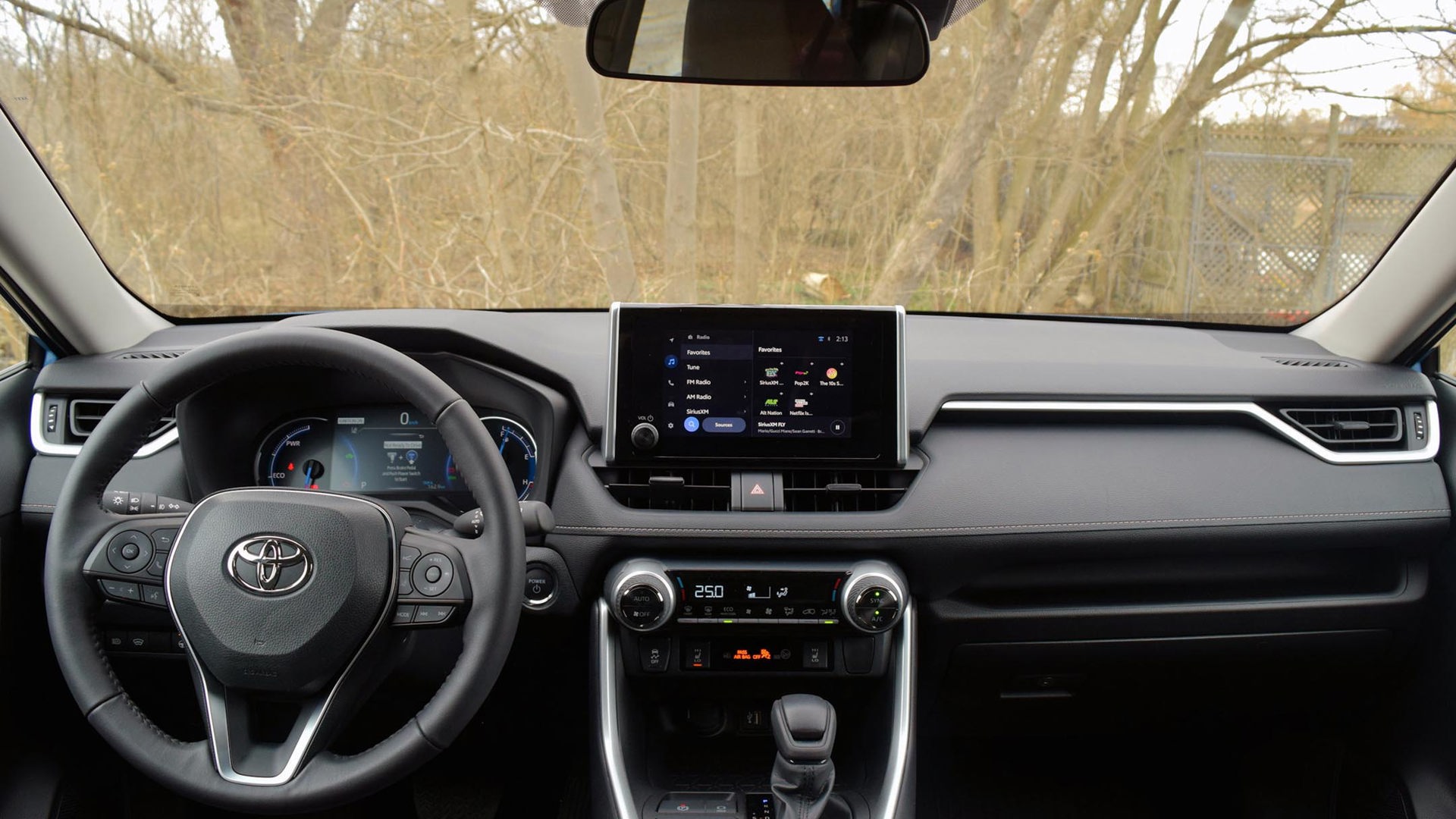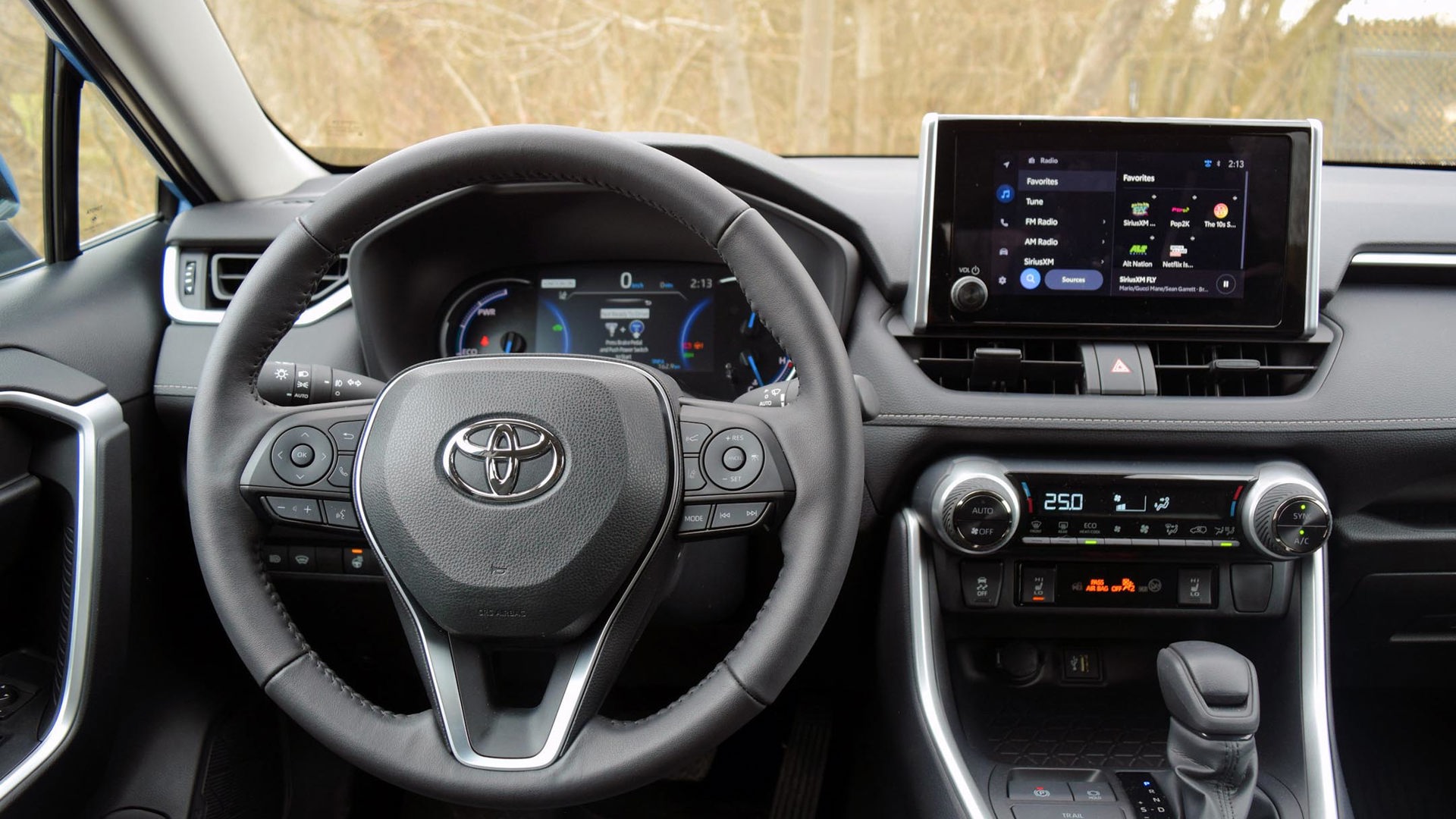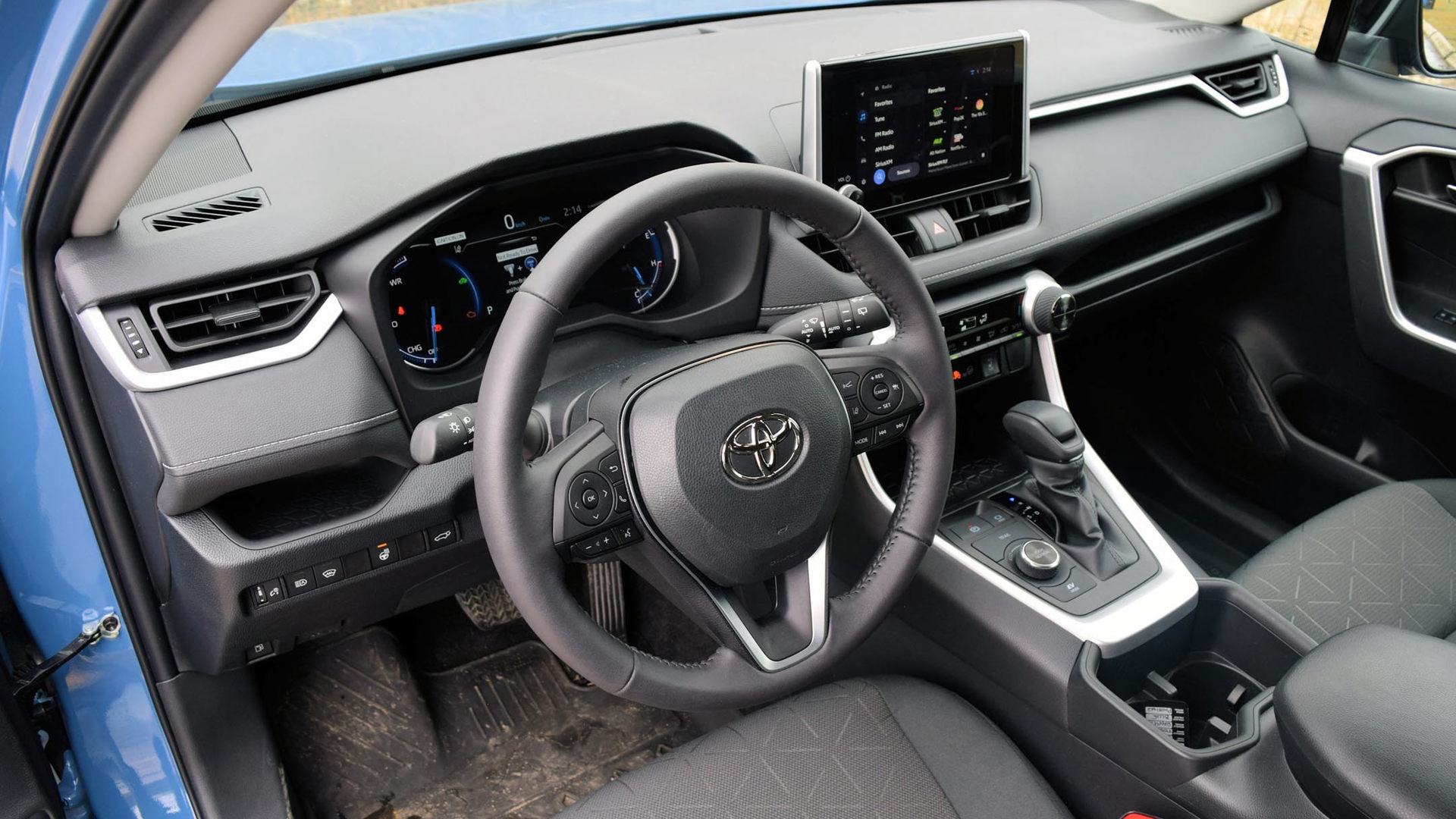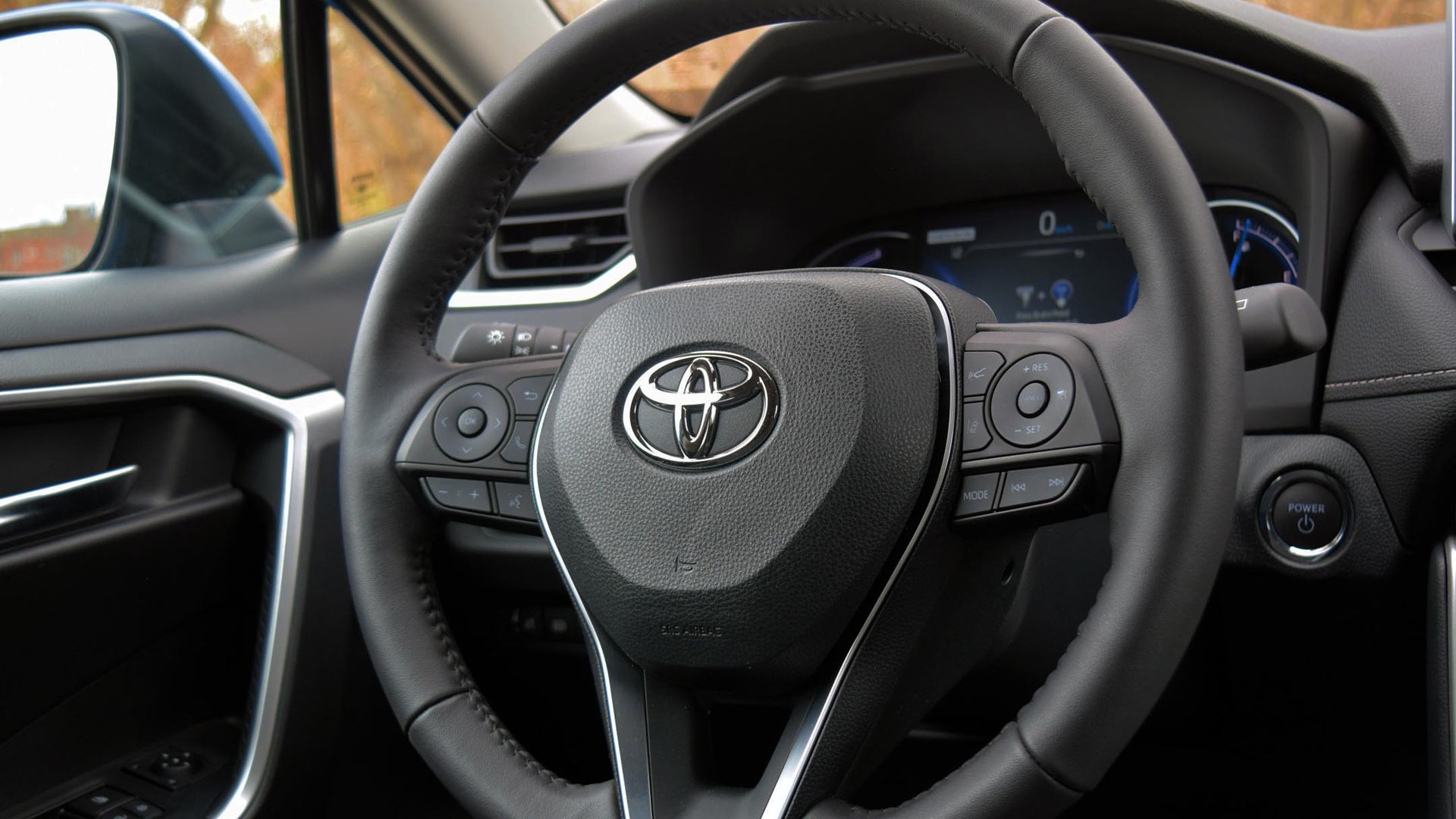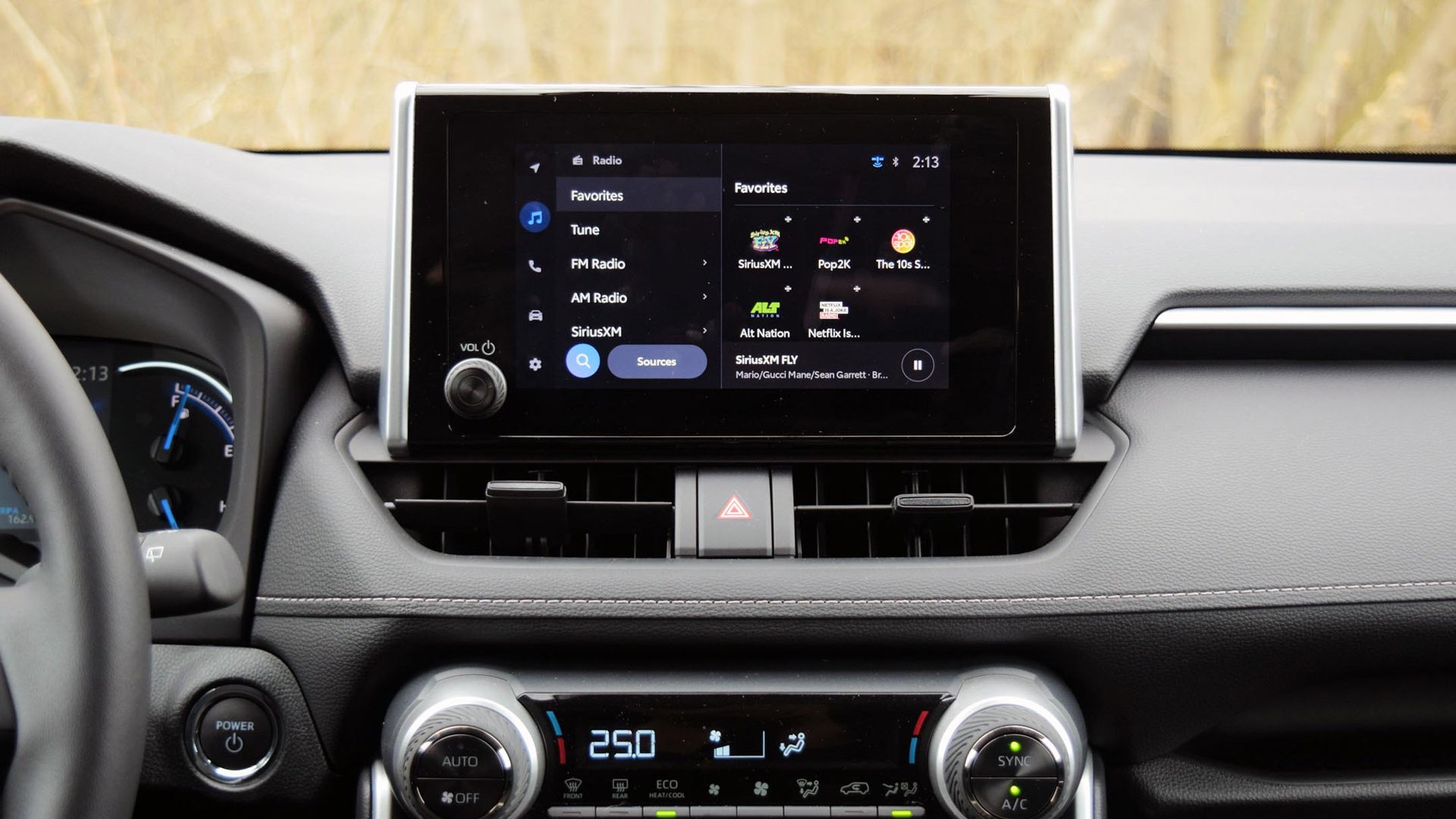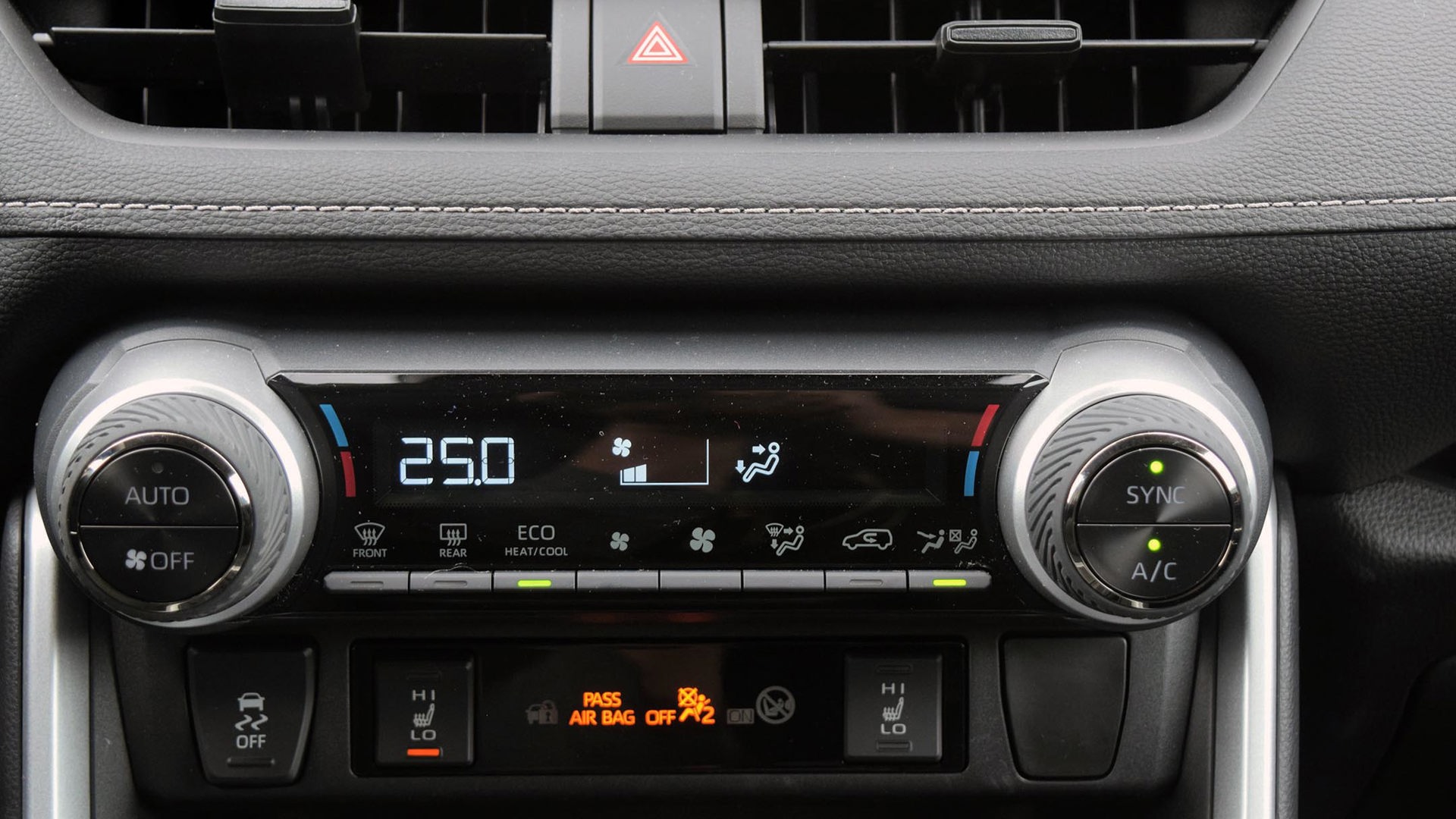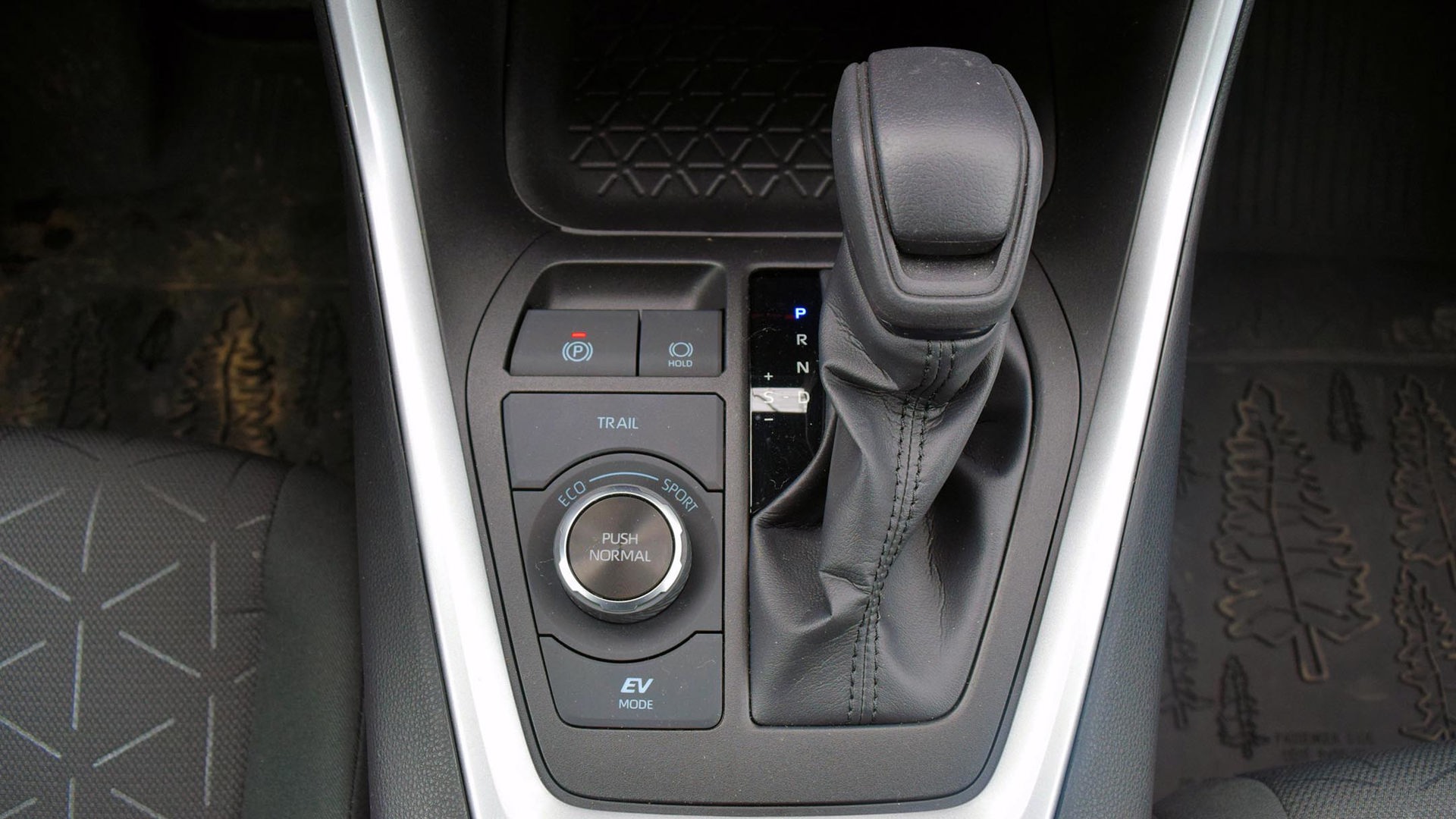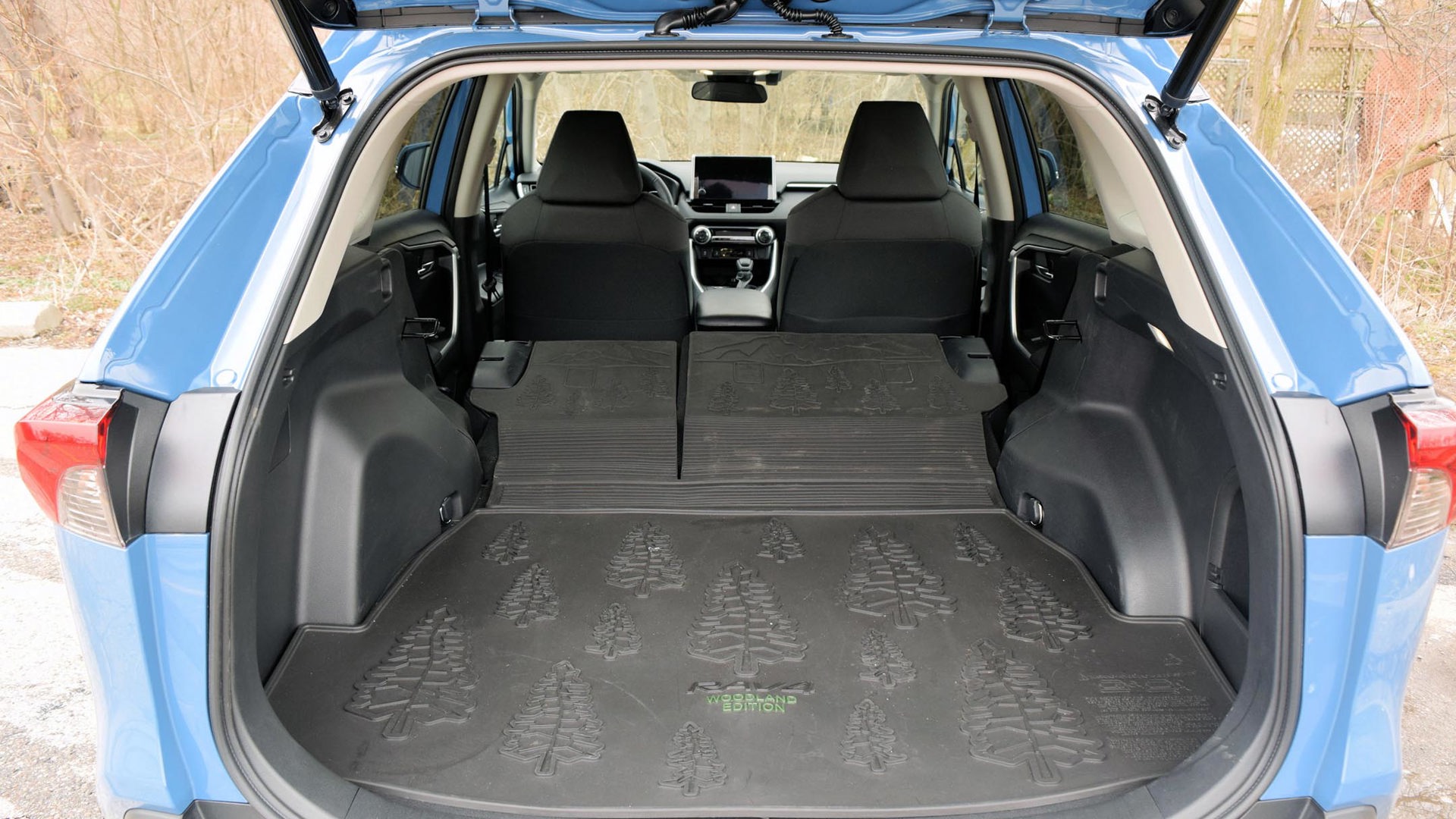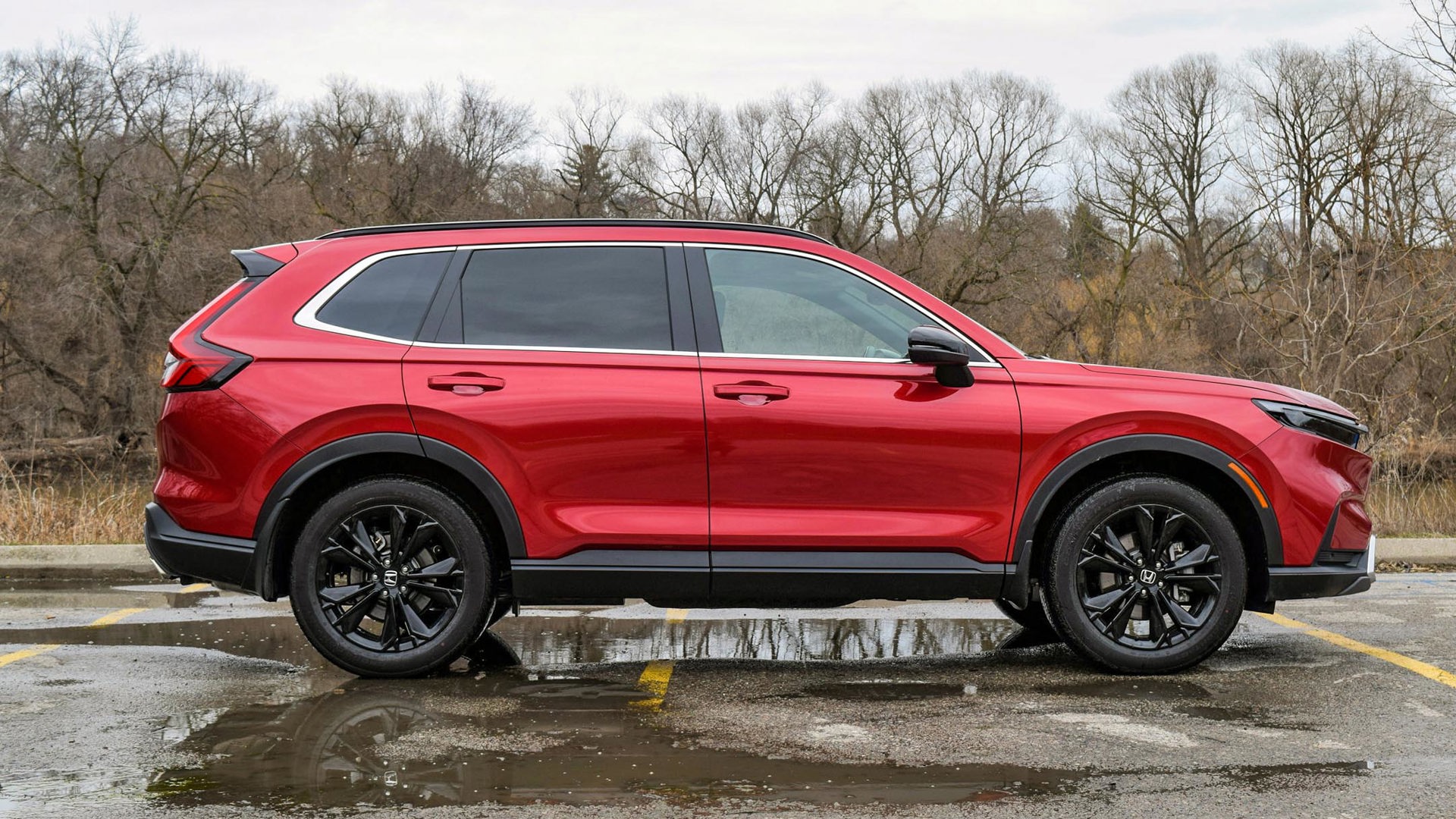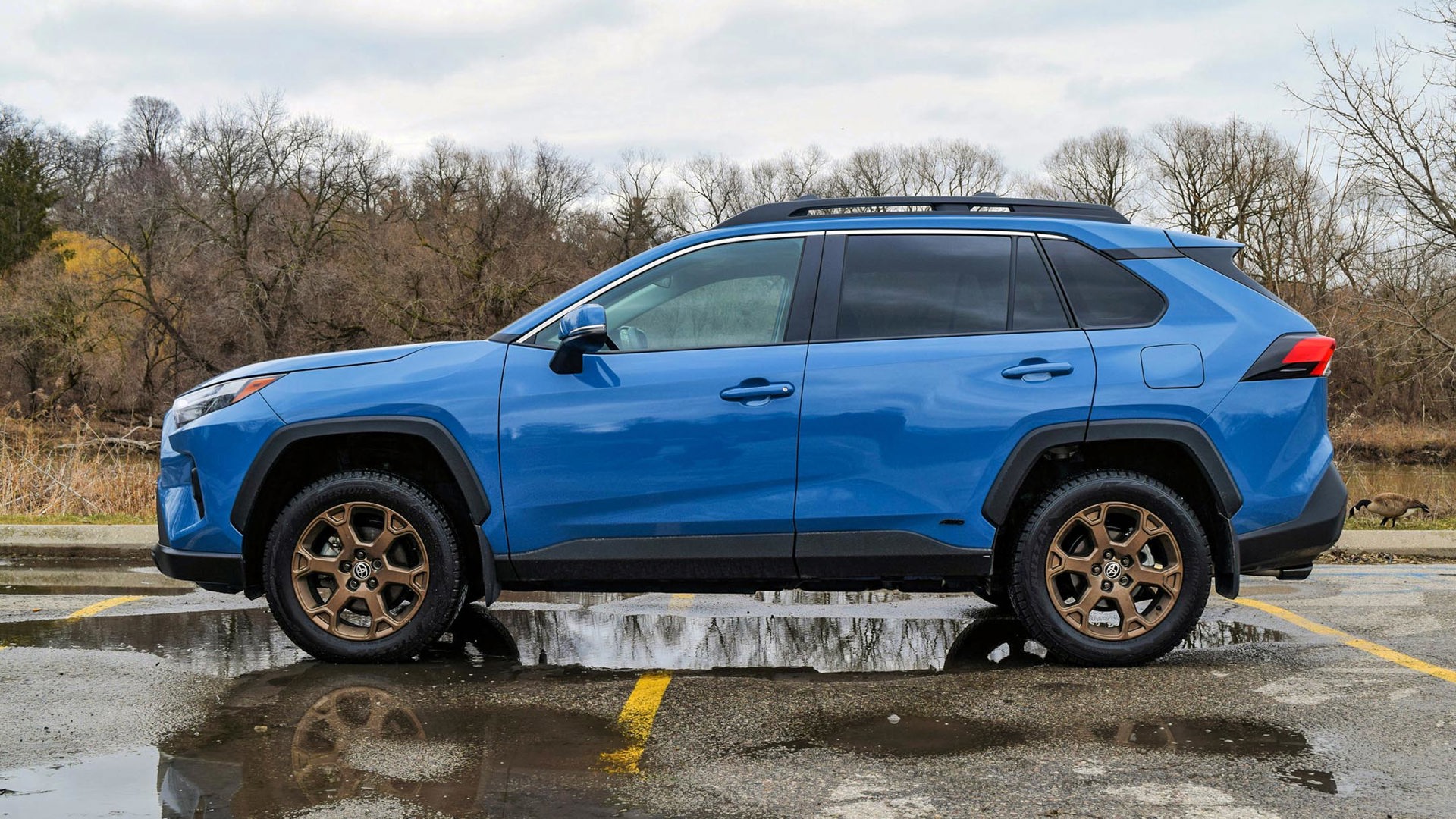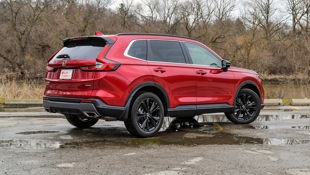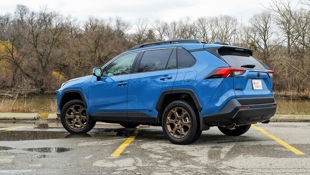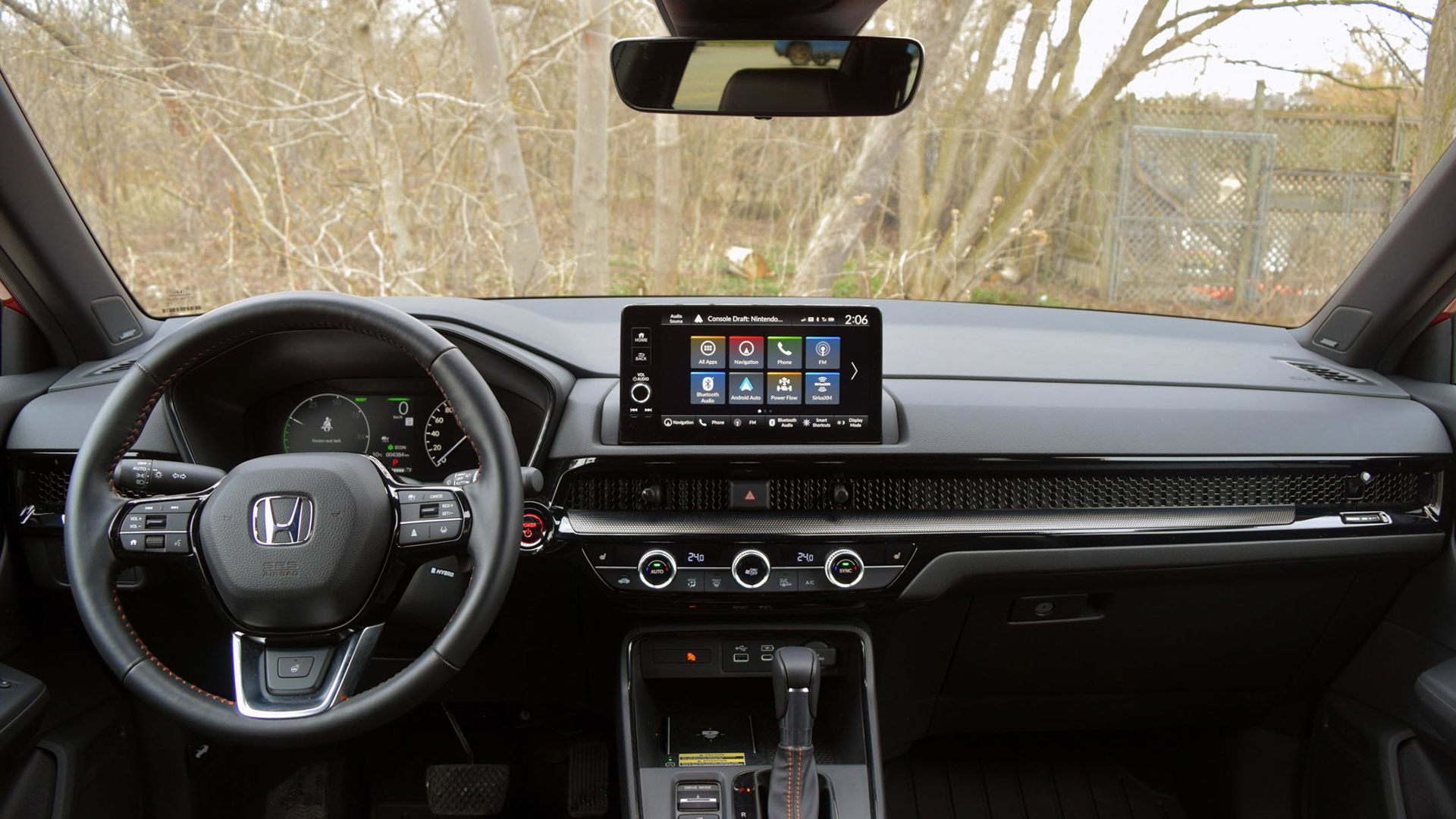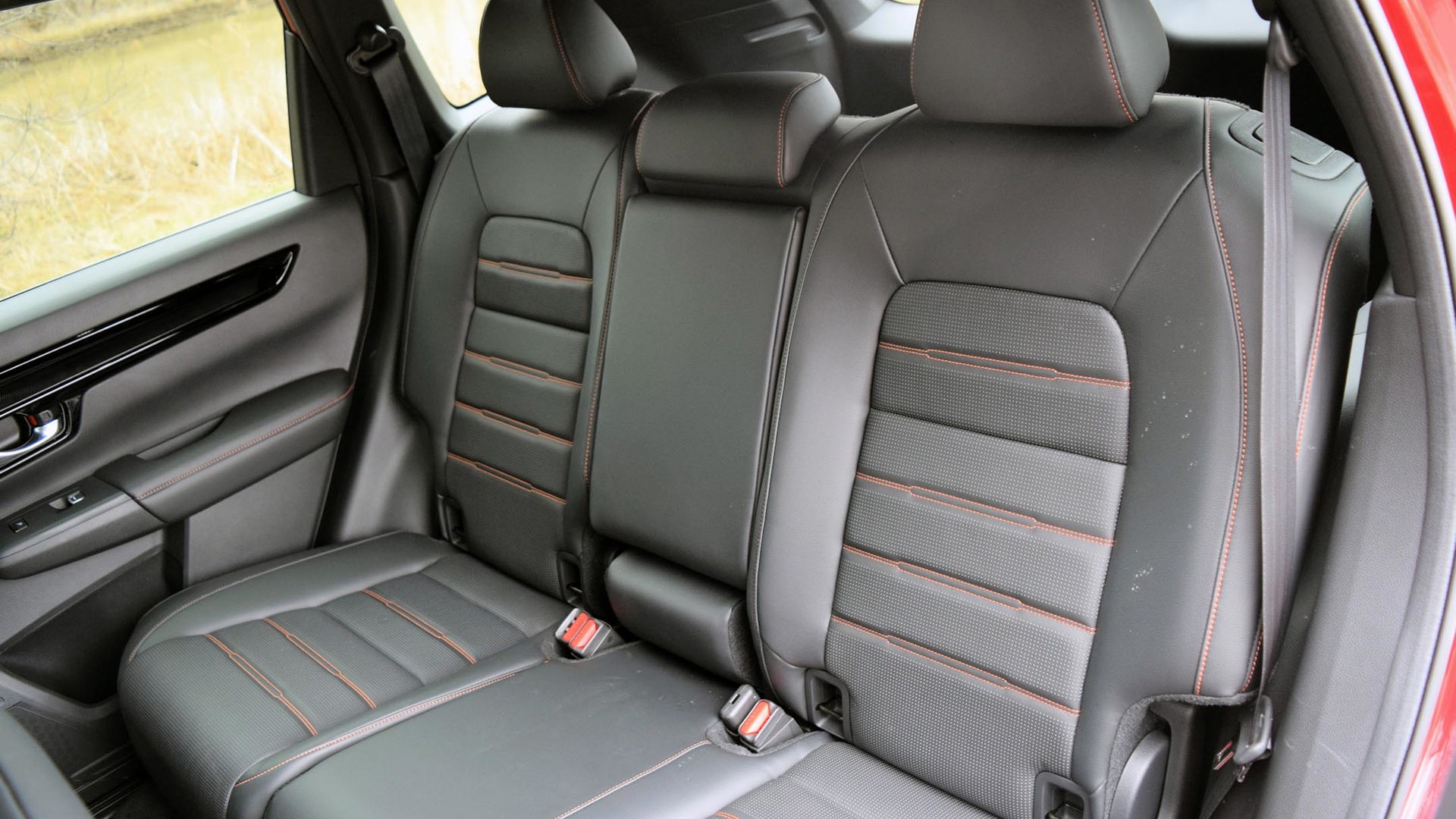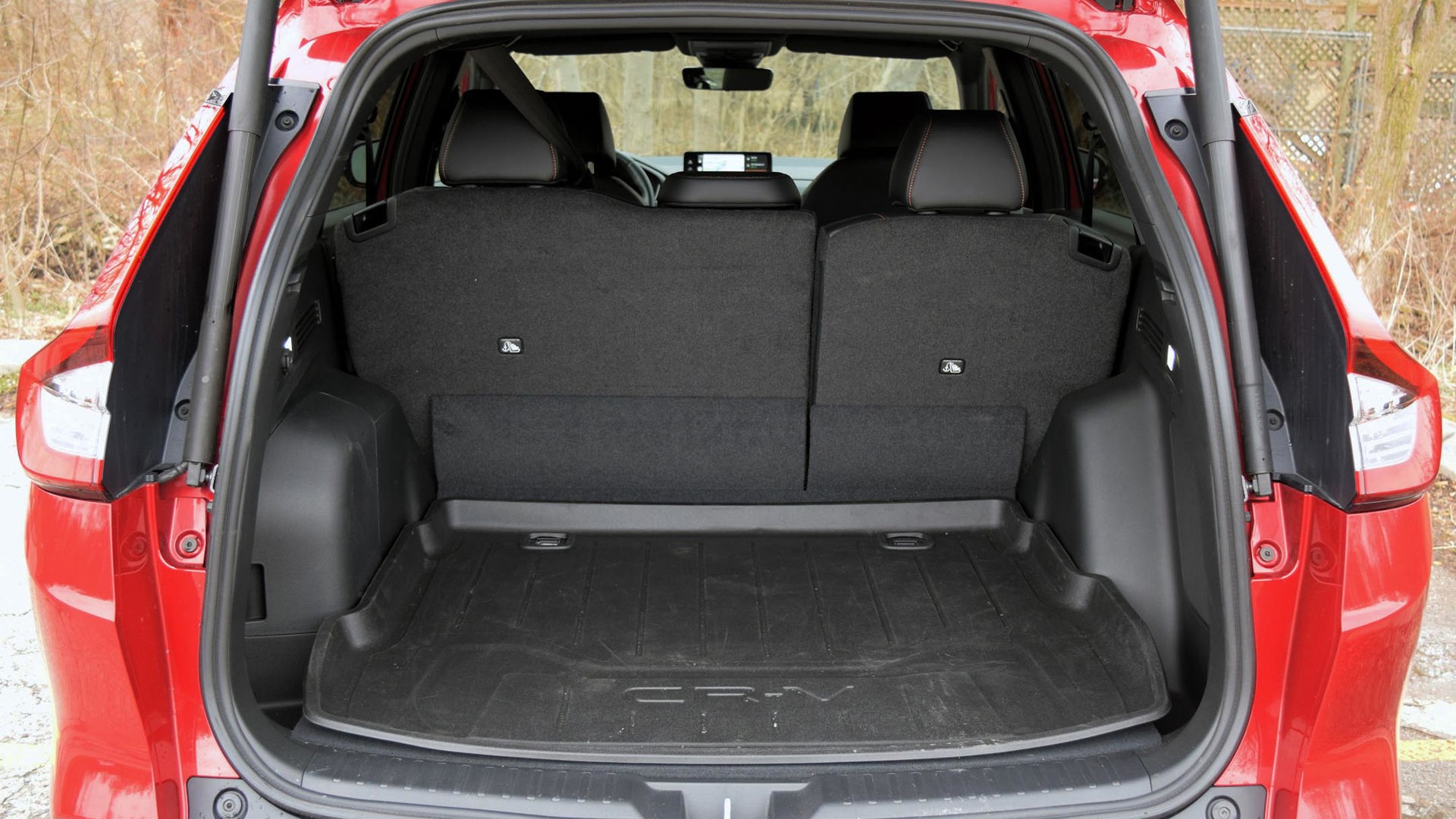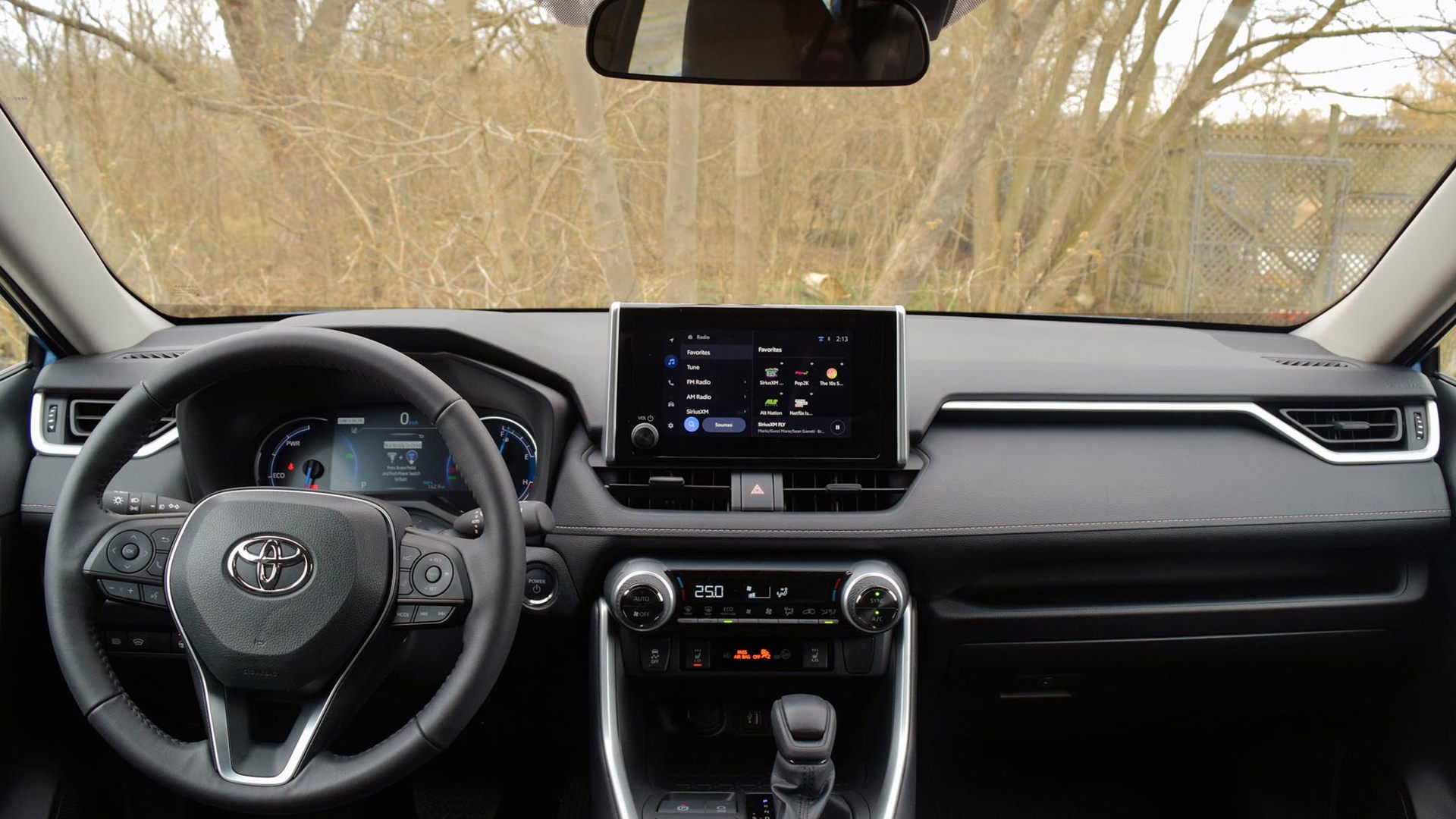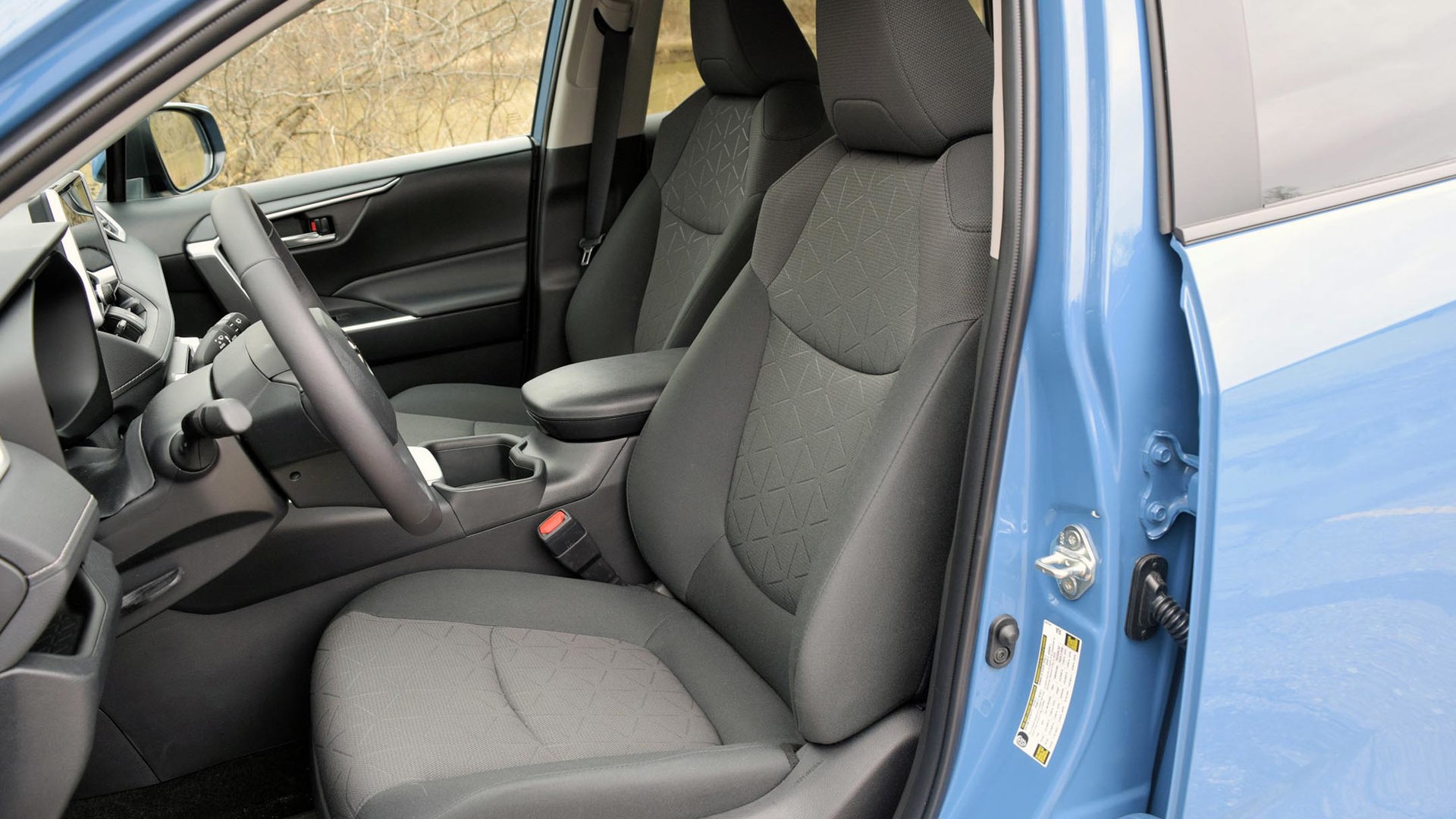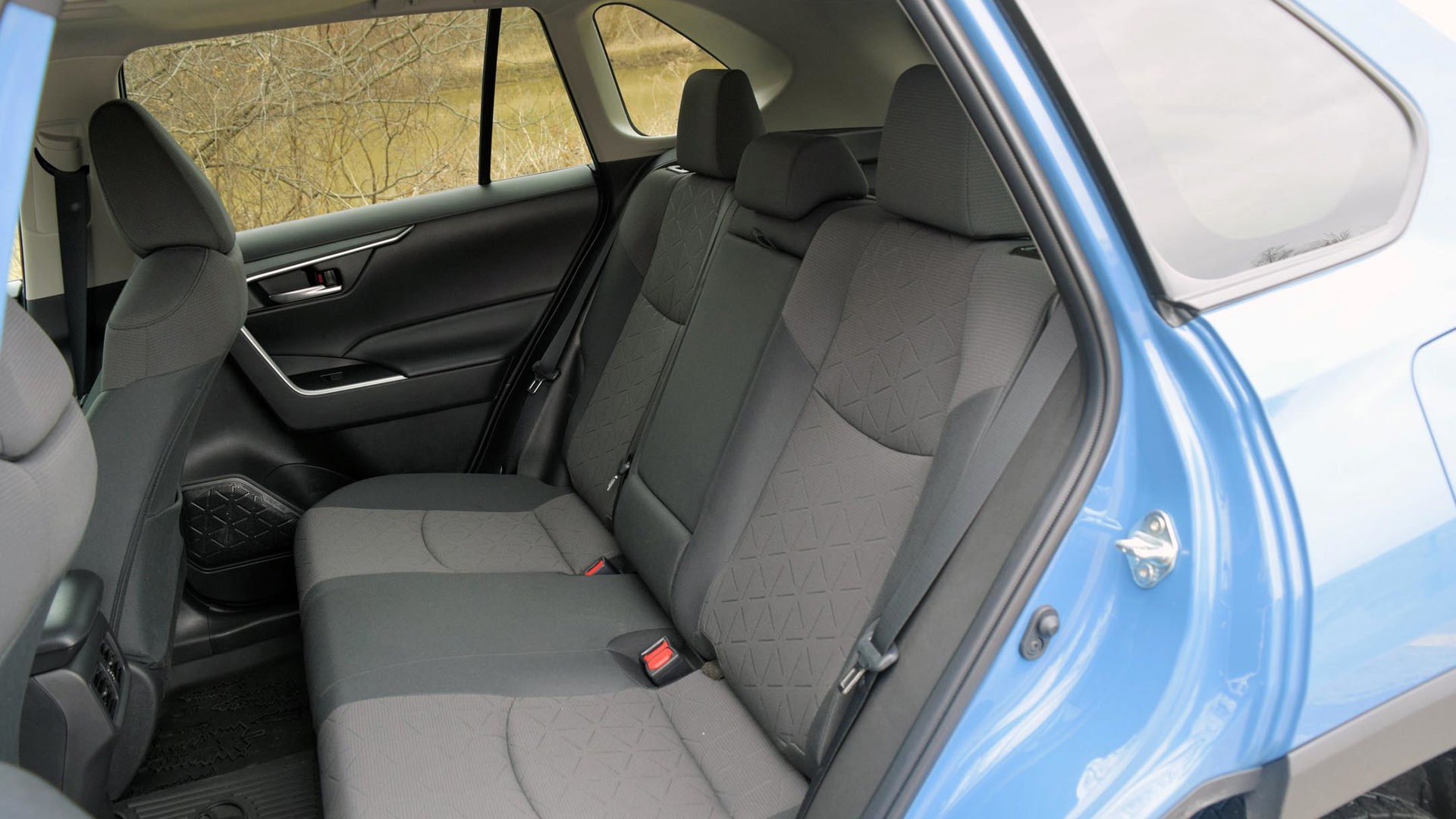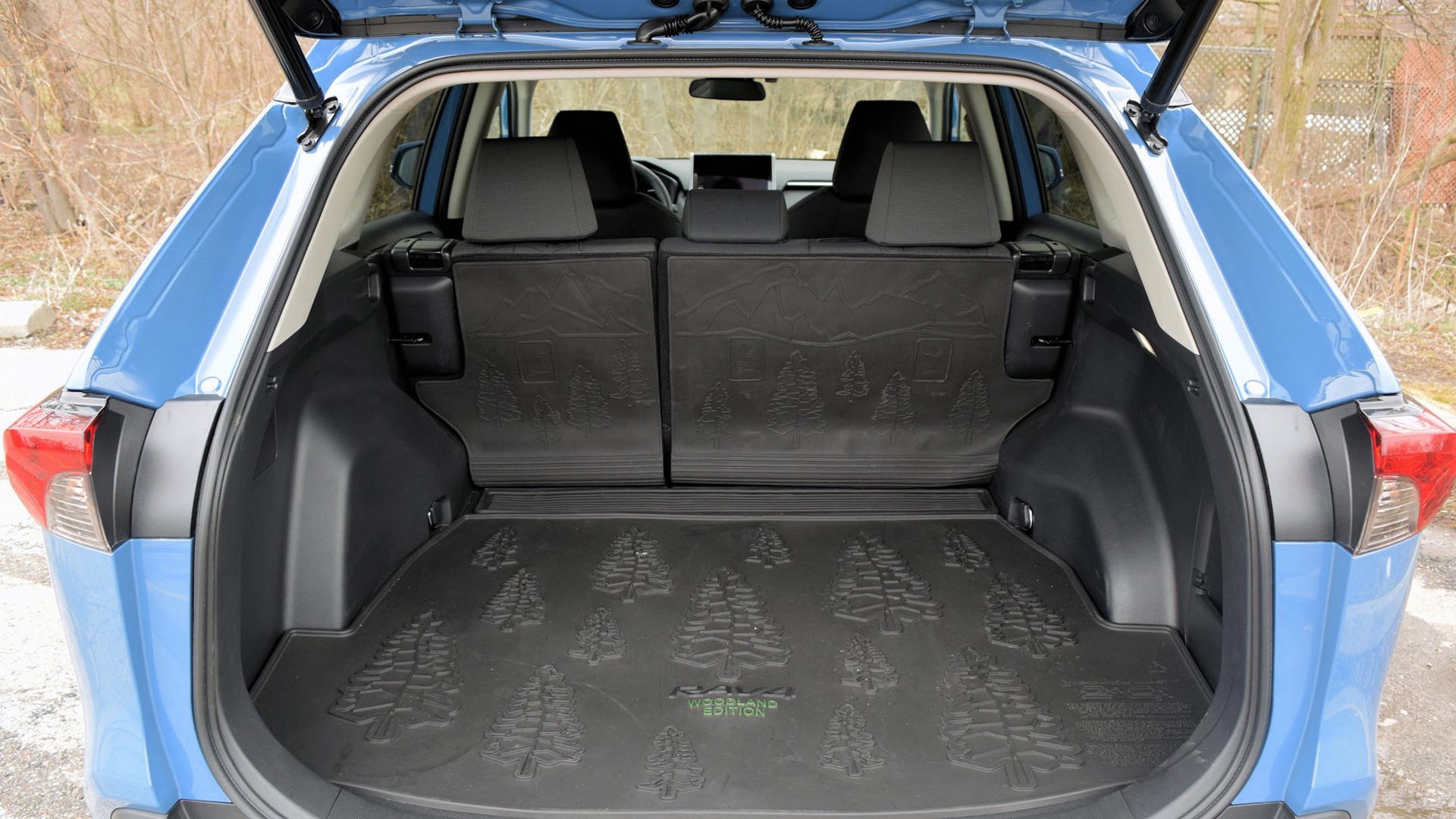Comparison Data
|
2023 Honda CR-V Touring Hybrid
|
2023 Toyota RAV4 XLE Hybrid
|
|---|---|
|
Engine Displacement
2.0L
|
2.5L
|
|
Engine Cylinders
Hybrid I4
|
Hybrid I4
|
|
Peak Horsepower
204 net hp
|
219 net hp
|
|
Peak Torque
247 net lb-ft
|
N/A
|
|
Fuel Economy
6.0 / 6.9 / 6.4 L/100 km cty/hwy/cmb
|
5.8 / 6.3 / 6.0 L/100 km cty/hwy/cmb
|
|
Cargo Space
1,028 / 2,030 L seats down
|
1,059 / 1,977 L seats down
|
|
Base Price
$48,890
|
$37,990
|
|
A/C Tax
$100
|
$100
|
|
Destination Fee
$2,000
|
$1,930
|
|
Price as Tested
$50,990
|
$42,210
|
|
Optional Equipment
None
|
$2,190 – Woodland package, $2,190
|
There’s no question that the Toyota RAV4 and Honda CR-V are wildly popular, with this pair leading their segment in the sales charts for years.
That doesn’t, however, mean they’re perfect. And it seems both brands took recent criticism to heart when redesigning their compact crossovers. It’s been a few years since Toyota turned the boring RAV4 into something rugged-looking and versatile, with several distinct trim levels and packages, and the choice of gas, hybrid, and plug-in hybrid (PHEV) powertrains.
Changes to the CR-V arrived much more recently, with the redesigned 2023 version bringing with it an upscale vibe and a hybrid powertrain – the latter something that’s been offered in the United States for a number of years now but not in Canada.
Styling
Bland used to be the calling card of Toyota, but its designers have been working hard to make us fall in love with the automaker’s new sheet metal. Frankly, the plan is working. The boxy 2023 Toyota RAV4 looks rugged and tough, like a junior 4Runner (would that make it a 4Walker?), and the availability of packages like this tester’s Woodland add-on that spice up the exterior styling with two-tone paint finishes, bronze wheels, knobby tires, and more.
And then there’s the 2023 Honda CR-V, which looks a lot like the outgoing model in spite of a total redesign. There’s a bigger grille than before that borrows its honeycomb-style mesh from other models in the Honda lineup, but other tweaks are less obvious. Inside, it’s perhaps a bit too reminiscent of the compact Civic. That’s not necessarily a criticism, but it leaves the pricier CR-V lacking a sense of occasion by comparison.
The materials in the RAV4’s cabin are a bit flimsy feeling and can seem a bit drab thanks to the generous use of plain-looking plastic – especially next to some of the stuff in the CR-V. But then the overall layout and design is more interesting and memorable. The Woodland package ($2,190) that’s exclusive to the 2023 RAV4 Hybrid even has specific floor mats to emphasize its outdoorsy appeal.
Honda CR-V Hybrid: 6/10; Toyota RAV4 Hybrid: 8/10
Practicality
In spite of their shared compact classification, these two are spacious enough for both cargo and passengers. Shoppers seeking the most total cargo room will want the CR-V, which has 1,028 L behind the rear seats and 2,030 L when they’re folded. The RAV4 has slightly more space behind its second row, with 1,059 L, but not quite as much when they’re folded (1,977 L).
Even so, these two are among the most spacious entries in the segment. That’s true of their occupant areas, too. The RAV4 boasts more rear-seat headroom, while the CR-V takes the legroom crown.
Honda CR-V Hybrid: 8/10; Toyota RAV4 Hybrid: 8/10
User Friendliness
As equally accommodating as their cabins are, there are dramatic differences in how easy to use these crossovers are. The RAV4 has a notably dated-looking infotainment screen. The eight-inch display in the RAV4 XLE Hybrid tested here is also a little on the small side, but the range-topping XSE gets a 10.5-inch unit. Either way, the graphics are low-rent, although the large, well-labelled buttons on the dash are excellent.
The Honda CR-V Hybrid comes in a single trim and features a nine-inch screen that looks more modern and is easier to use. Both vehicles include Android Auto and Apple CarPlay support, but the CR-V throws in wireless capability for the former. The CR-V also includes dedicated displays in the HVAC dials, which present useful information without cluttering the screen or dash.
Honda CR-V Hybrid: 8/10; Toyota RAV4 Hybrid: 7/10
Fuel Economy
According to Natural Resources Canada (NRCan), the 2023 Honda CR-V Hybrid should average 6.4 L/100 km in combined driving, while the RAV4 Hybrid is rated at 6.0. In reality the gulf between them was even wider, with the Toyota managing a combined consumption rate of 5.8 L/100 km compared to 6.9 in the Honda.
Honda CR-V Hybrid: 6.5/10; Toyota RAV4 Hybrid: 8/10
Power
The combined gas-electric output of the RAV4 Hybrid is 219 hp, which is a noticeable upgrade from the 204 hp generated by the CR-V’s hybrid powertrain. Beyond their on-paper differences, the Toyota feels more responsive and eager to get going. Passing manoeuvres come with ease – albeit a bunch of noise.
In comparison, the CR-V’s gas motor is quieter but stays on longer, humming along even when stopped at traffic lights. Both vehicles offer a variety of drive modes to improve responsiveness or focus on efficiency, but the overall settings of the Toyota are superior.
Honda CR-V Hybrid: 7/10; Toyota RAV4 Hybrid: 8.5/10
Driving Feel
The CR-V may feel a bit sluggish compared to the RAV4, but it rides well with a focus on refined on-road manners. It manages to stay composed over rough roads, and its heavy steering feels more direct than the RAV4’s.
The Toyota’s Woodland package includes meaty all-terrain tires, which improve ride quality a bit at the expense of road noise and overall responsiveness. The chassis is sharp, so don’t expect a wallowy drive; but the steering can be a bit unnerving, providing limited engagement.
Honda CR-V Hybrid: 7.5/10; Toyota RAV4 Hybrid: 7.5/10
Comfort
With more rear-seat room and a smoother drive, it’s easy to call the CR-V the comfier ride. Combined with its quieter cabin, the Honda enjoys a solid win in this category.
Both vehicles offer important comfort features, including dual-zone climate control, heated front and rear seats, a heated steering wheel, and even ventilated front seats. All of those features are included in the one-trim CR-V Hybrid, while ventilated front seats and heated rear ones only come in the priciest RAV4 Hybrid. It’s also worth pointing out that the RAV4 XLE Hybrid tested here with the Woodland package featured stiff cloth-covered seats, which turned road trips into a literal pain in the butt.
Honda CR-V Hybrid: 8/10; Toyota RAV4 Hybrid: 7/10
Features
Again, the hybrid powertrain is only found in the CR-V’s top trim, meaning it comes fully loaded. The RAV4 Hybrid comes in more trim levels, with varying degrees of equipment.
The major difference between the two is the availability of wireless Android Auto in the CR-V, while the RAV4 offers an 11-speaker stereo compared to the nine-speaker setup in the Honda. The RAV4 also features five USB ports, compared to four in the CR-V, although Honda combines both USB-C and USB-A plugs in its offering and Toyota doesn’t.
Honda CR-V Hybrid: 7/10; Toyota RAV4 Hybrid: 7.5/10
Safety
Both vehicles arrive with a whole suite of safety equipment including blind-spot monitoring with rear cross-traffic alert, forward collision avoidance, lane-keeping assistance, and automatic high-beam headlights. The RAV4 also includes junction turn assist that can warn of oncoming traffic when making a left – a feature not offered with the CR-V’s suite.
However, safety tech is only half the story, with crash-test results providing a complete picture. The Insurance Institute for Highway Safety (IIHS) has rated the RAV4 with the Top Safety Pick award, while the CR-V enjoys Top Safety Pick+ honours. While the CR-V gets top marks all around, the RAV4 was docked for its performance in the updated front overlap and side crash tests.
Honda CR-V Hybrid: 8.5/10; Toyota RAV4 Hybrid: 8/10
Value
Honda seems to believe fuel efficiency is worthy of a significant price premium. So while the gas-only CR-V starts at $36,240 before tax (but including a non-negotiable $2,000 freight charge), the range-topping 2023 CR-V Touring Hybrid costs an eyebrow-raising $50,890.
Toyota has taken the opposite approach, offering its hybrid option on five RAV4 trims. So while the cheapest gas-powered RAV4 LE rings in at $34,520 including its $1,930 freight charge – and includes all-wheel drive, it’s worth noting, while the cheapest CR-V doesn’t – the same trim can be had with a hybrid powertrain for just $36,780. Even the most expensive RAV4 Hybrid has a sticker price of $47,180 – $3,710 less than the CR-V Hybrid. Meanwhile, the 2023 Toyota RAV4 XLE Hybrid tested here has a pre-tax price of $42,110.
Honda CR-V Hybrid: 6/10; Toyota RAV4 Hybrid: 8/10
The Verdict
While the 2023 Honda CR-V Hybrid boasts an attractive cabin with cool technology, the 2023 Toyota RAV4 Hybrid is simply the better pick. It’s more affordable, burns less gas, has more power, and looks sharper. It’s great that the gas-electric RAV4 has more competition, but the CR-V doesn’t impress enough to justify its lofty price tag.


